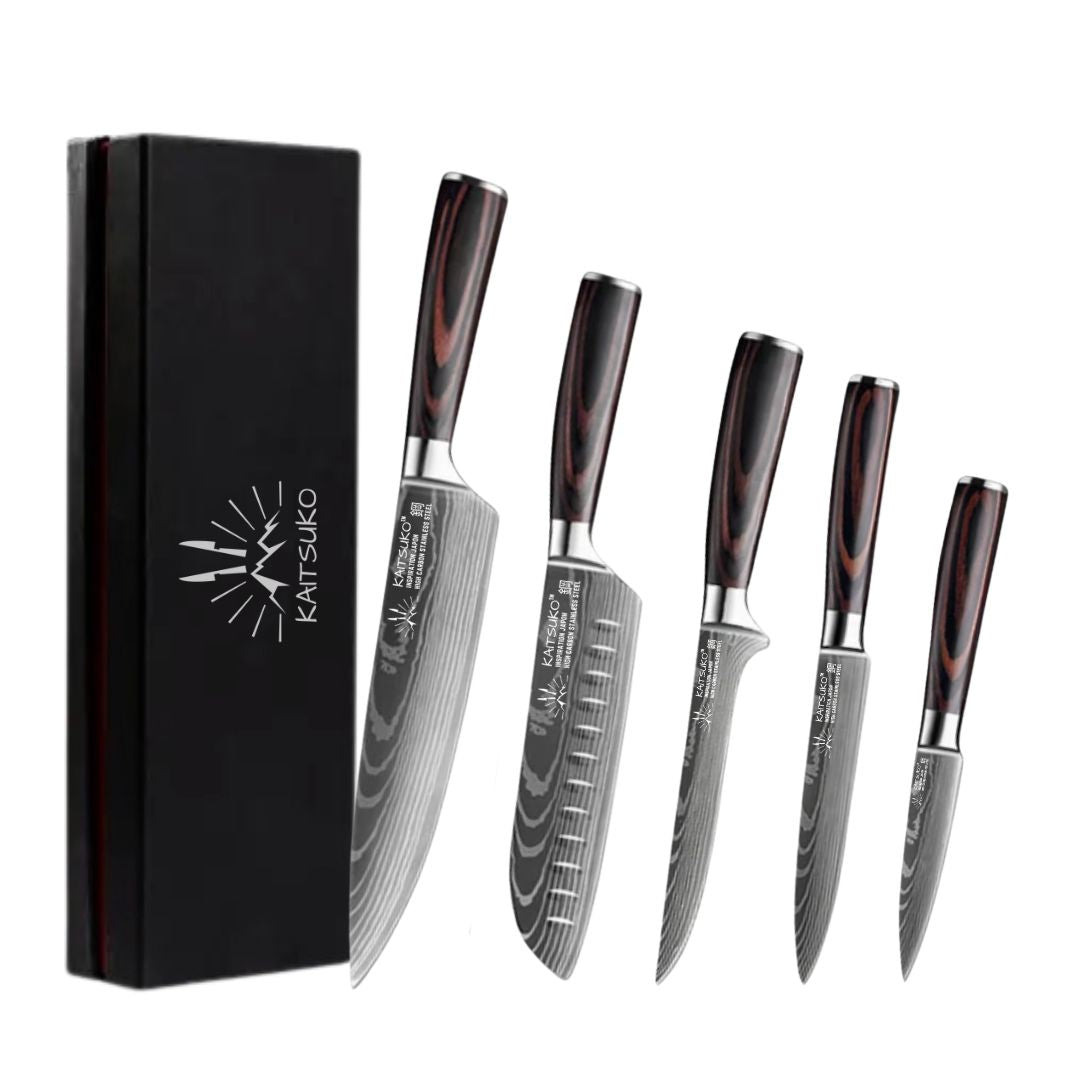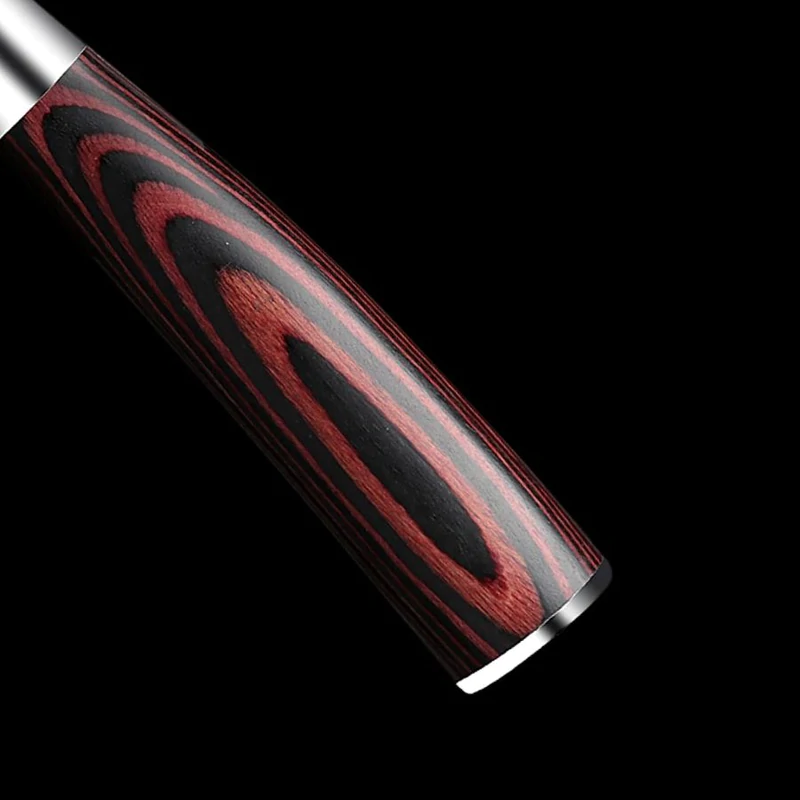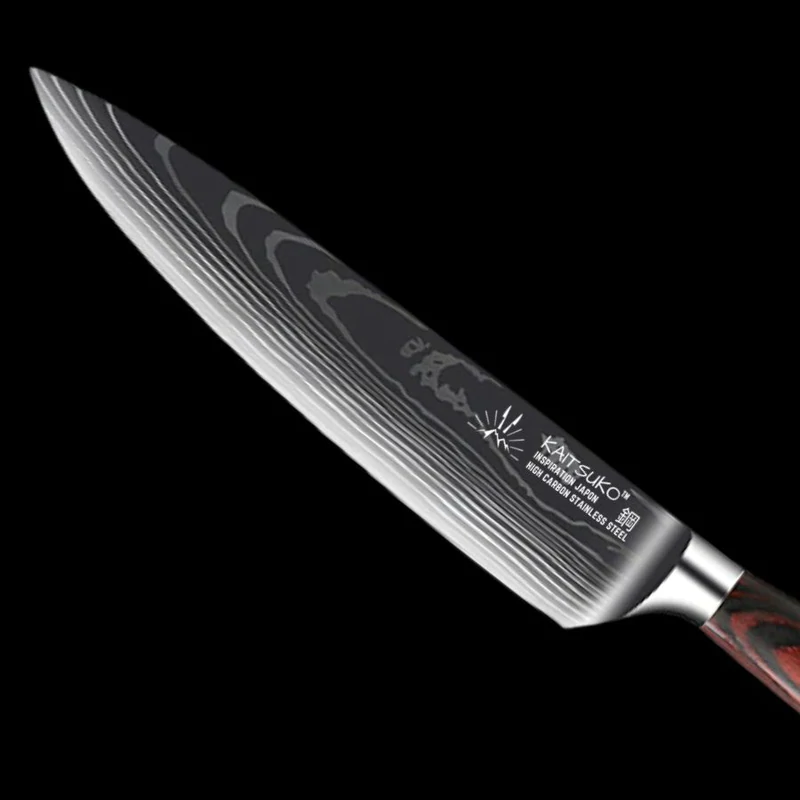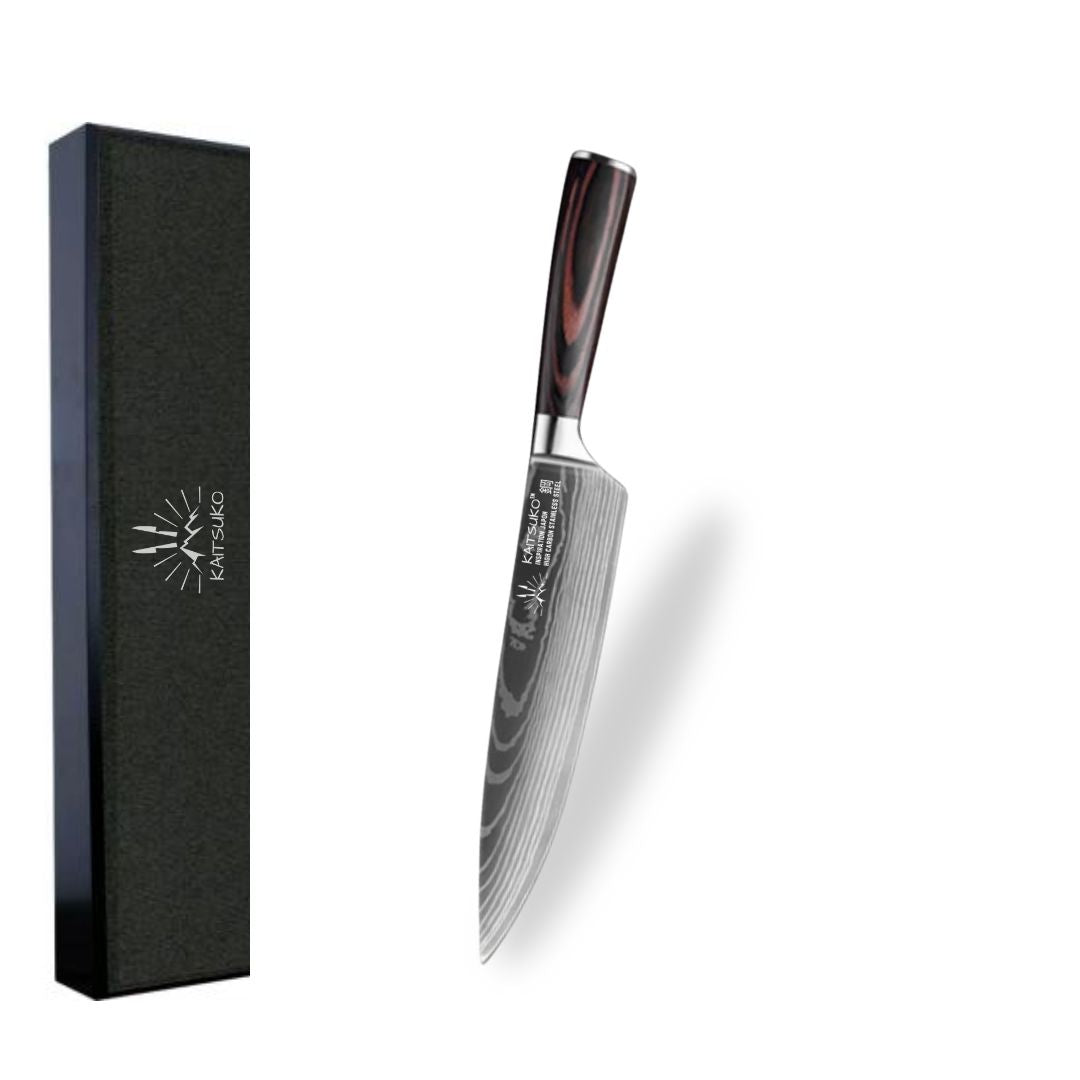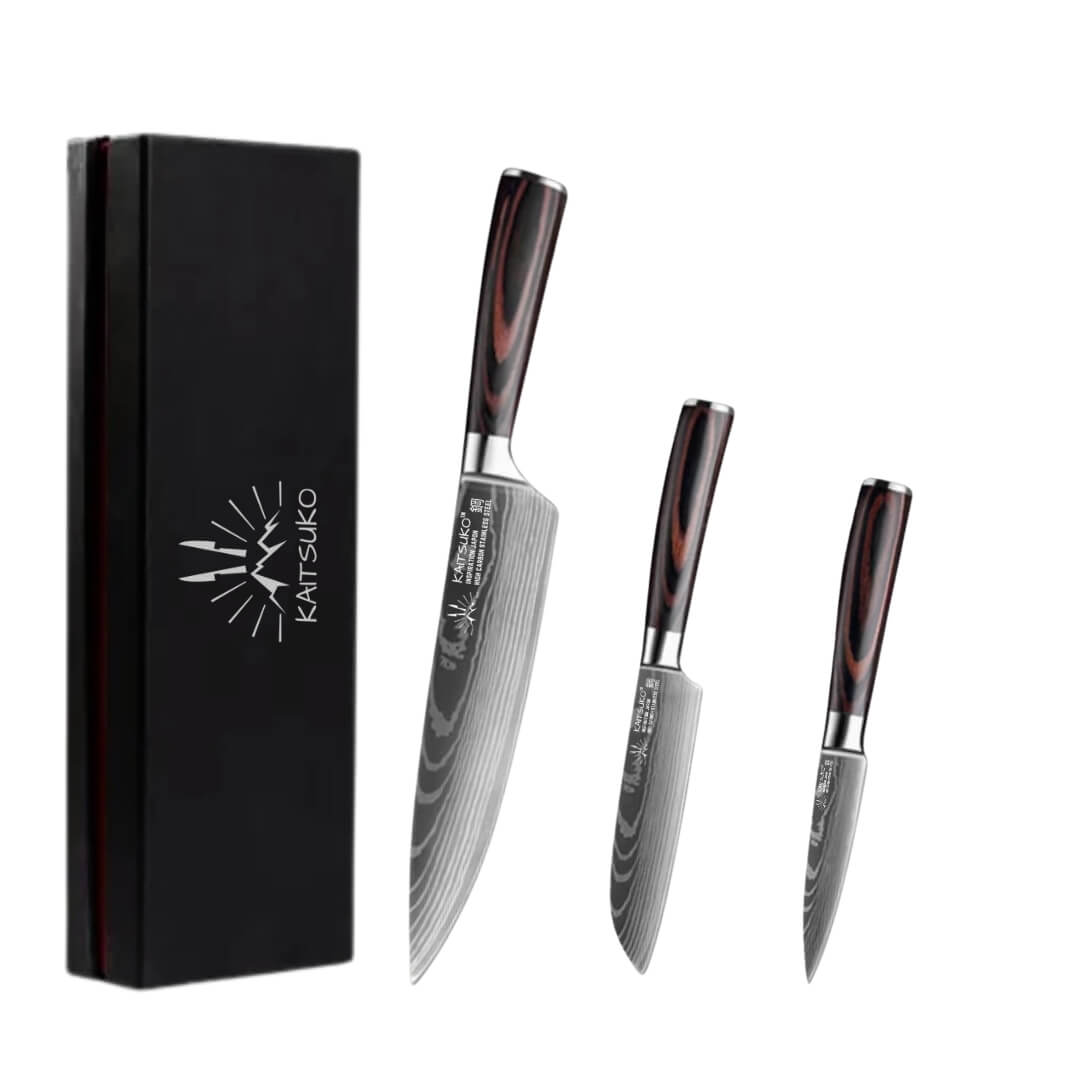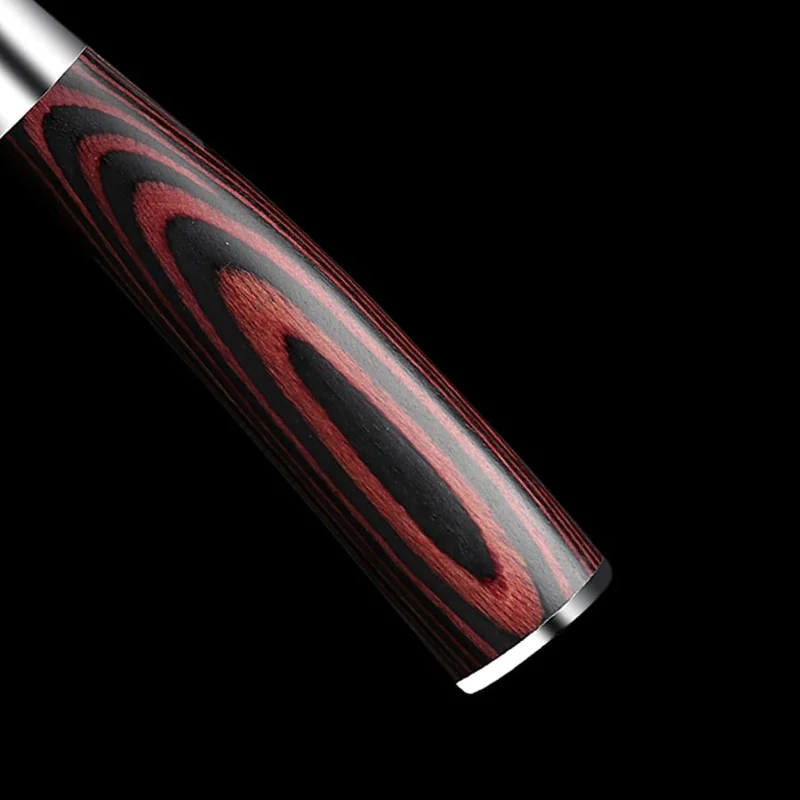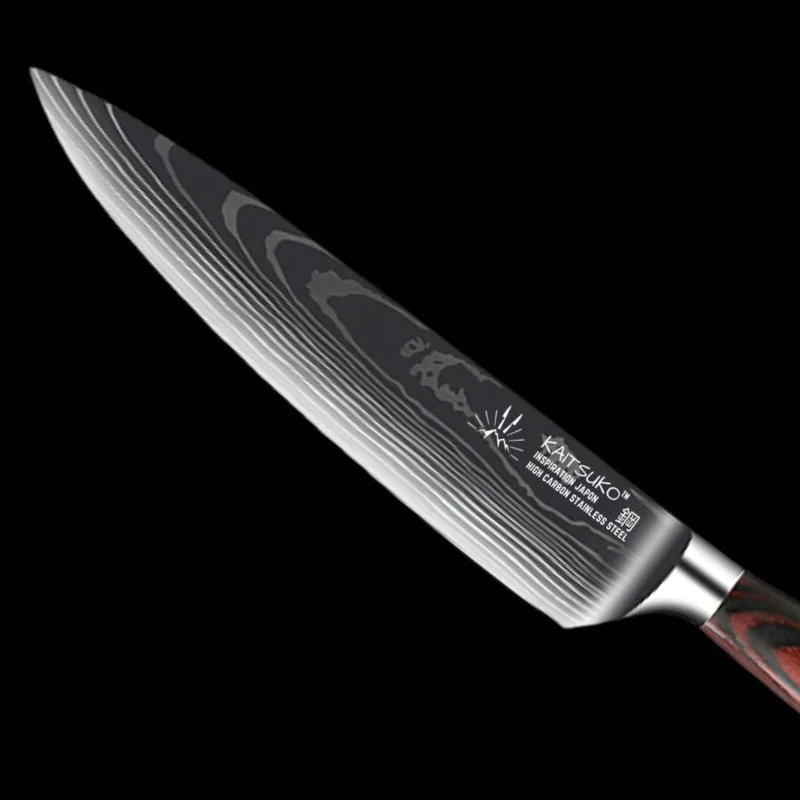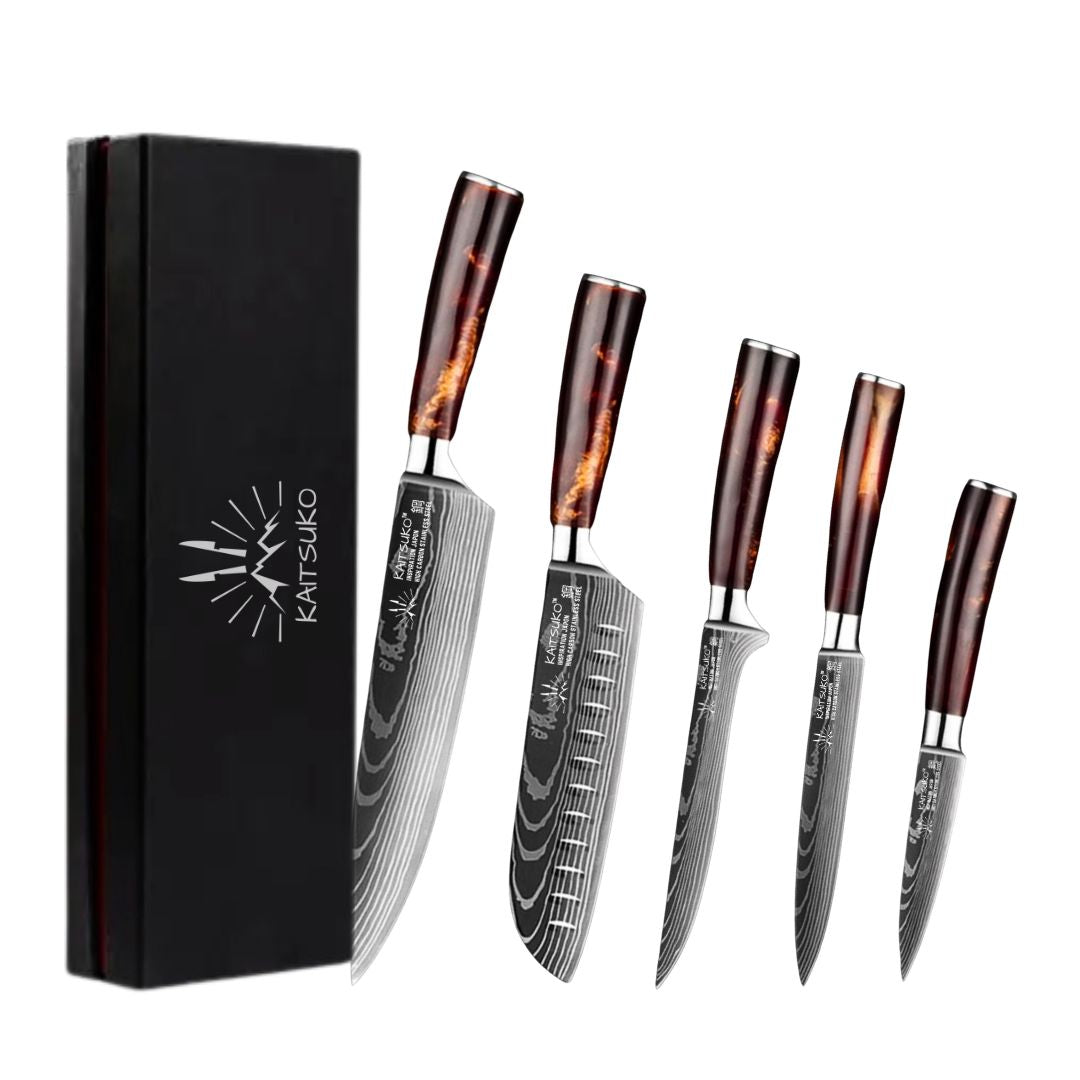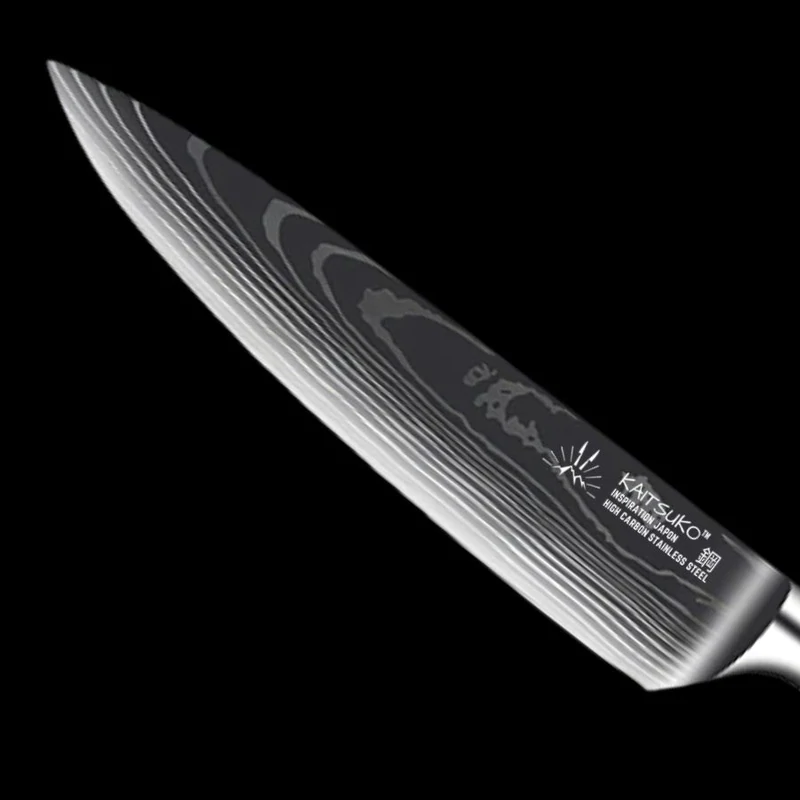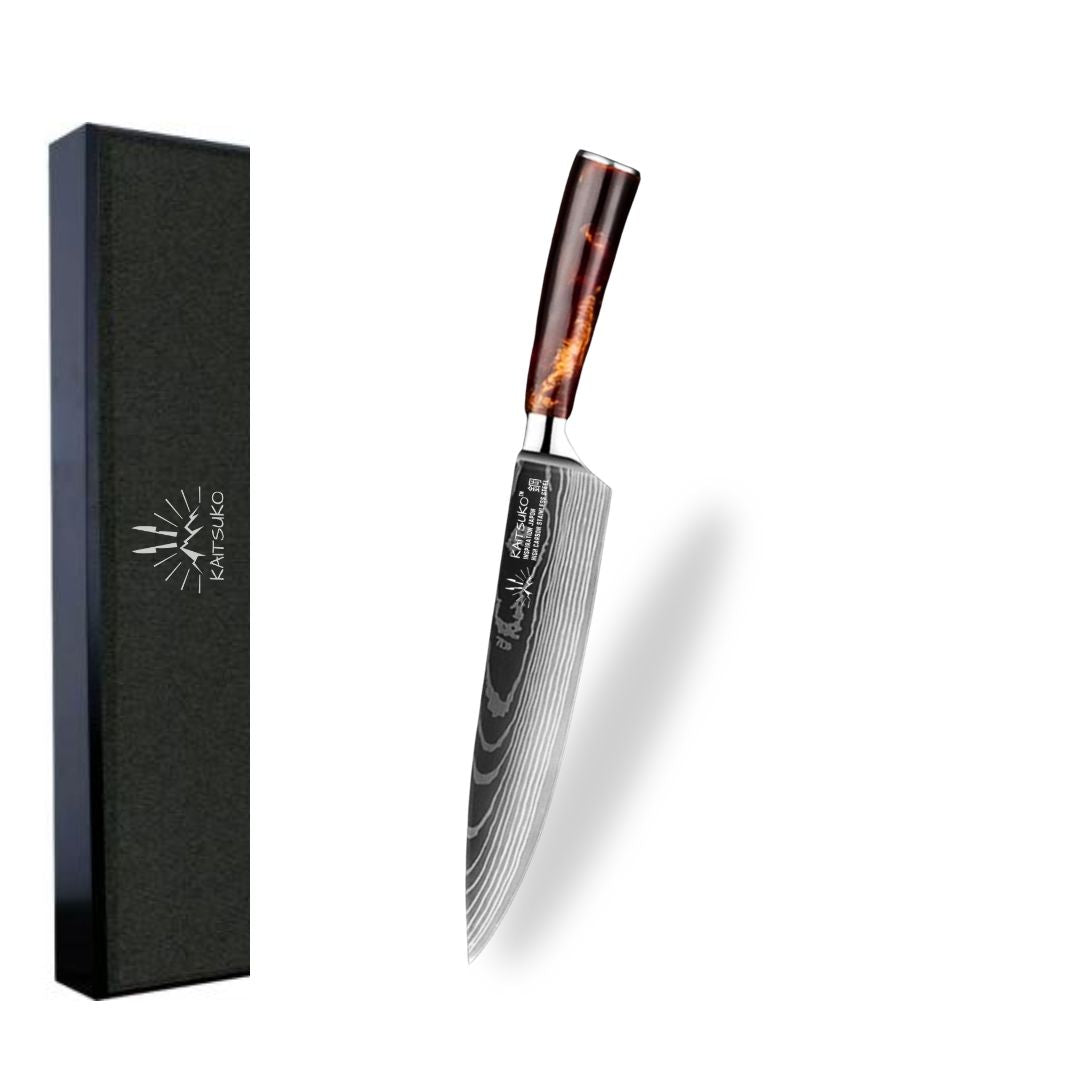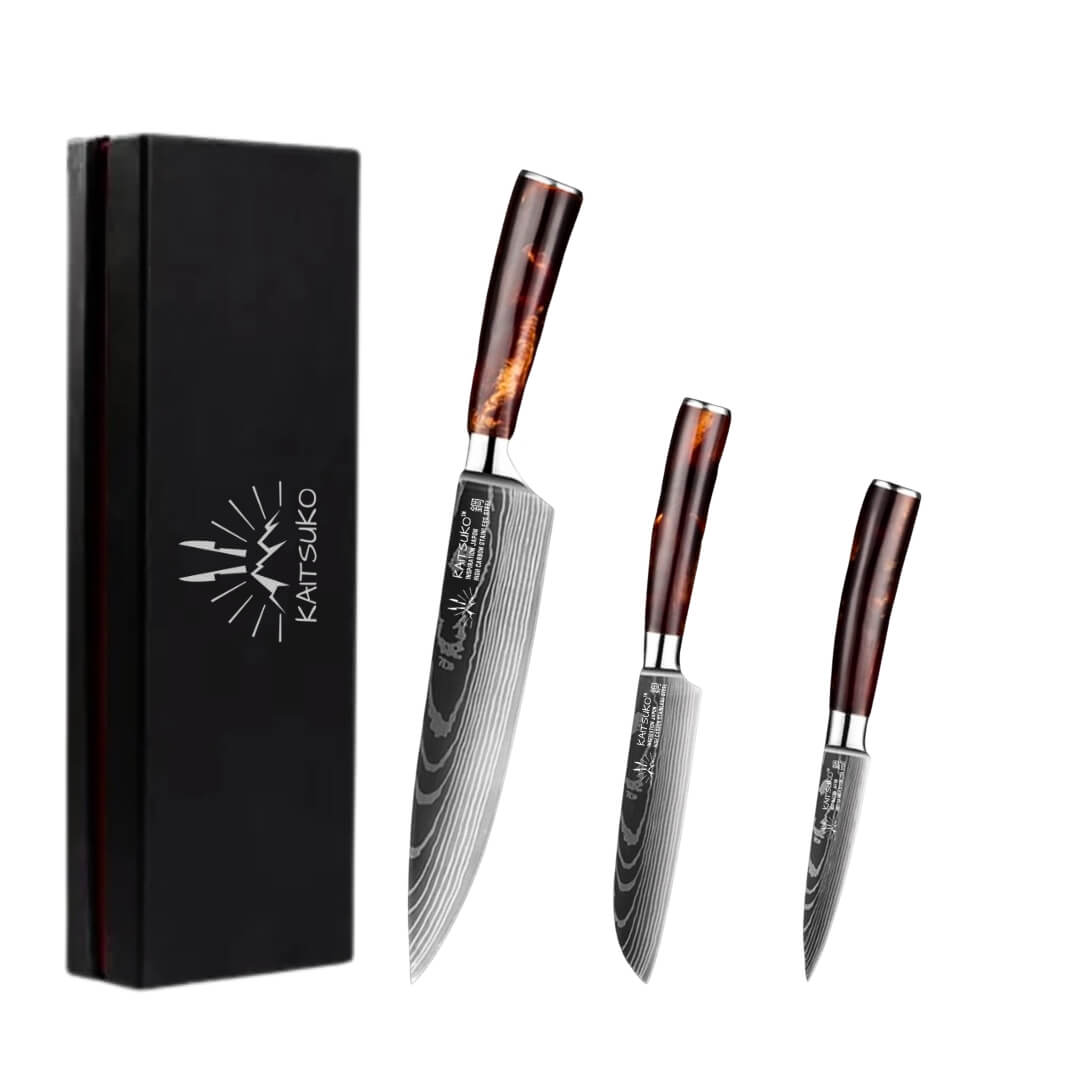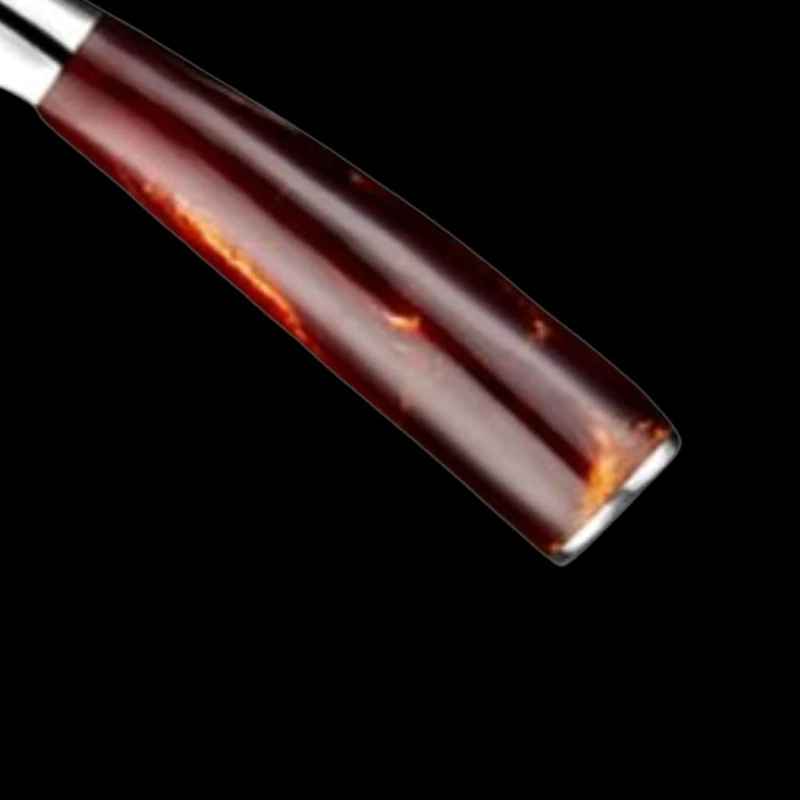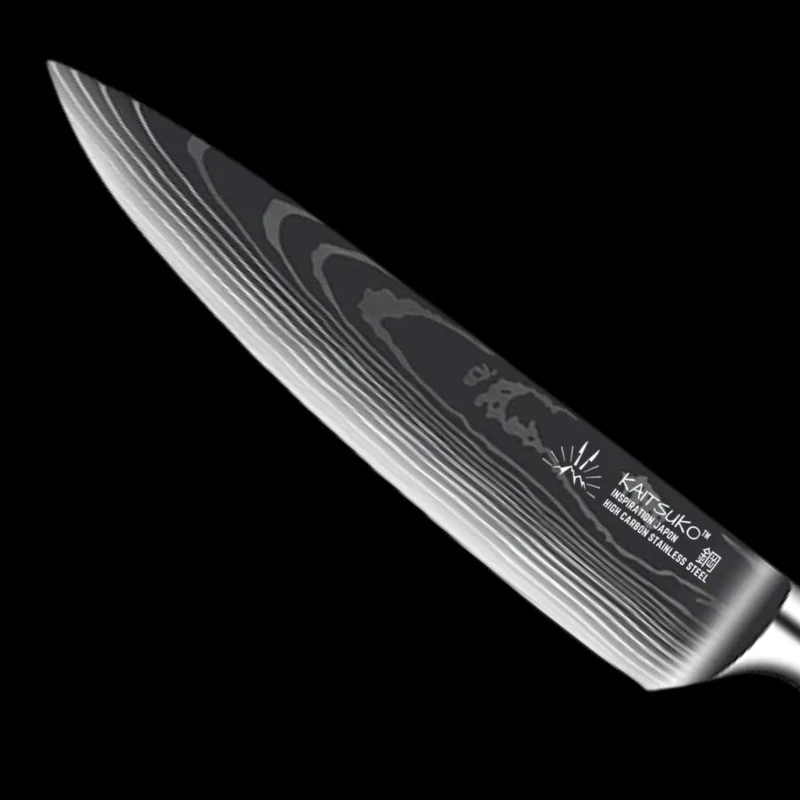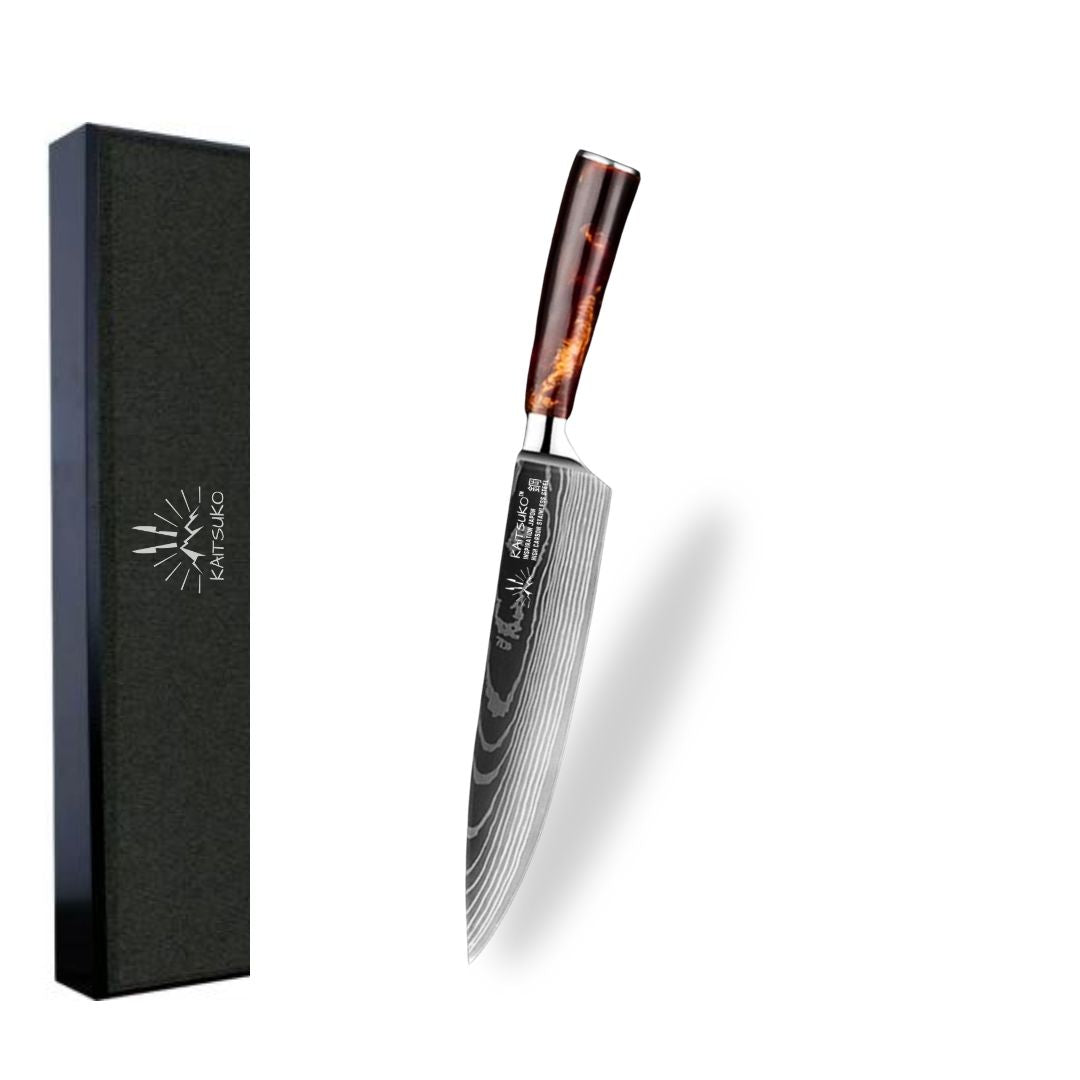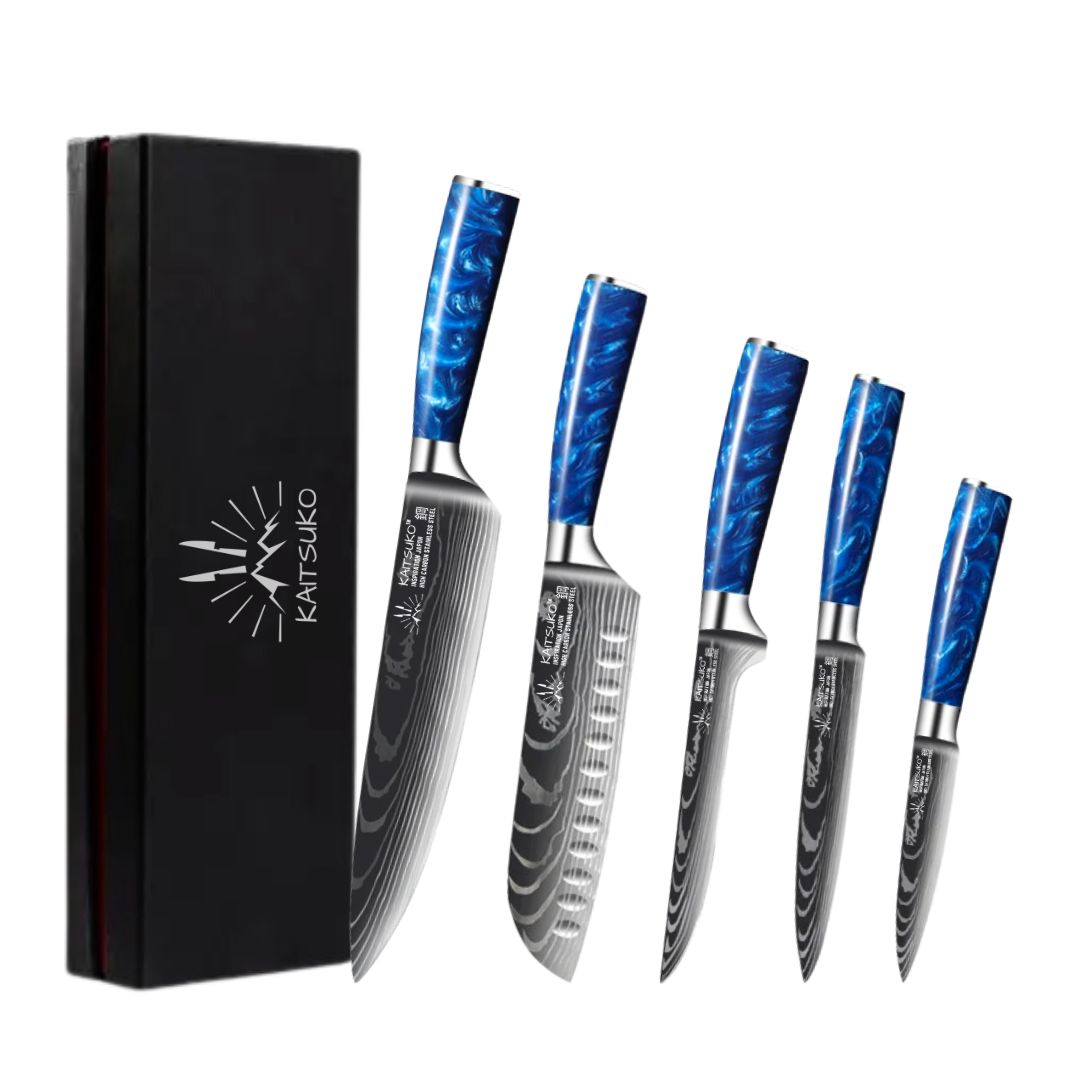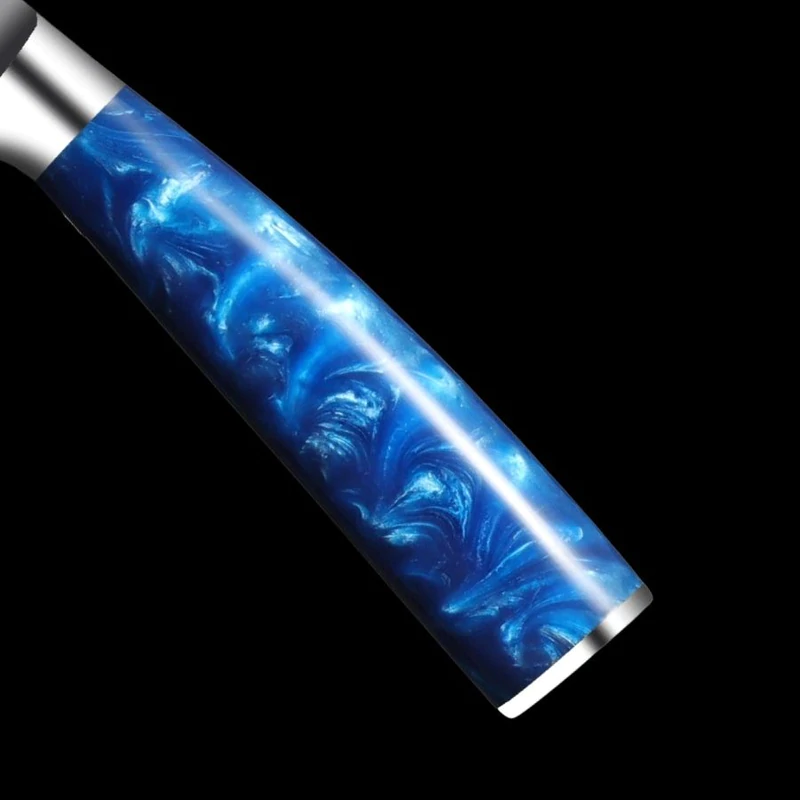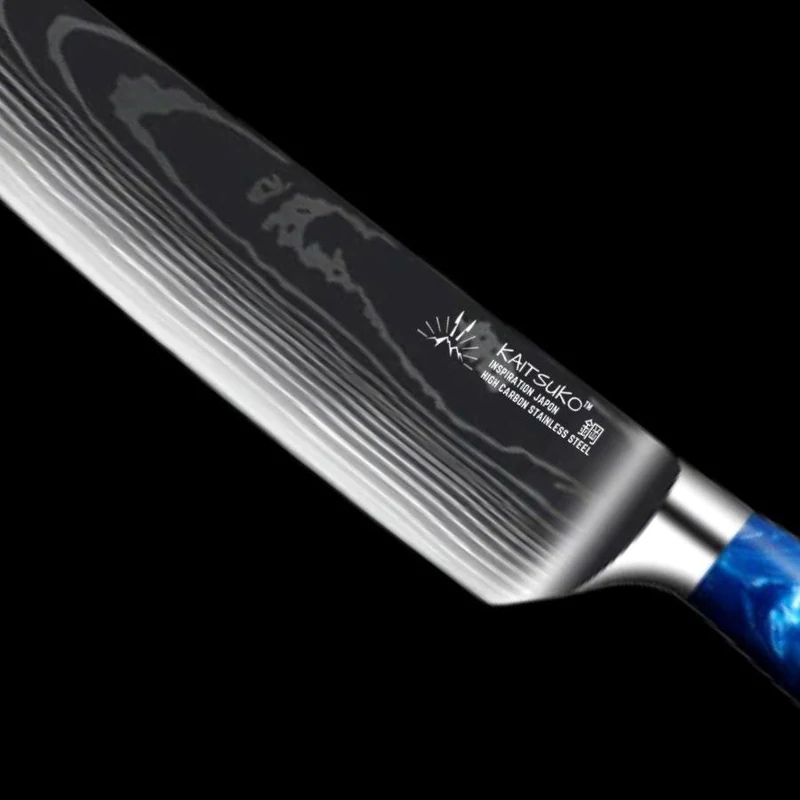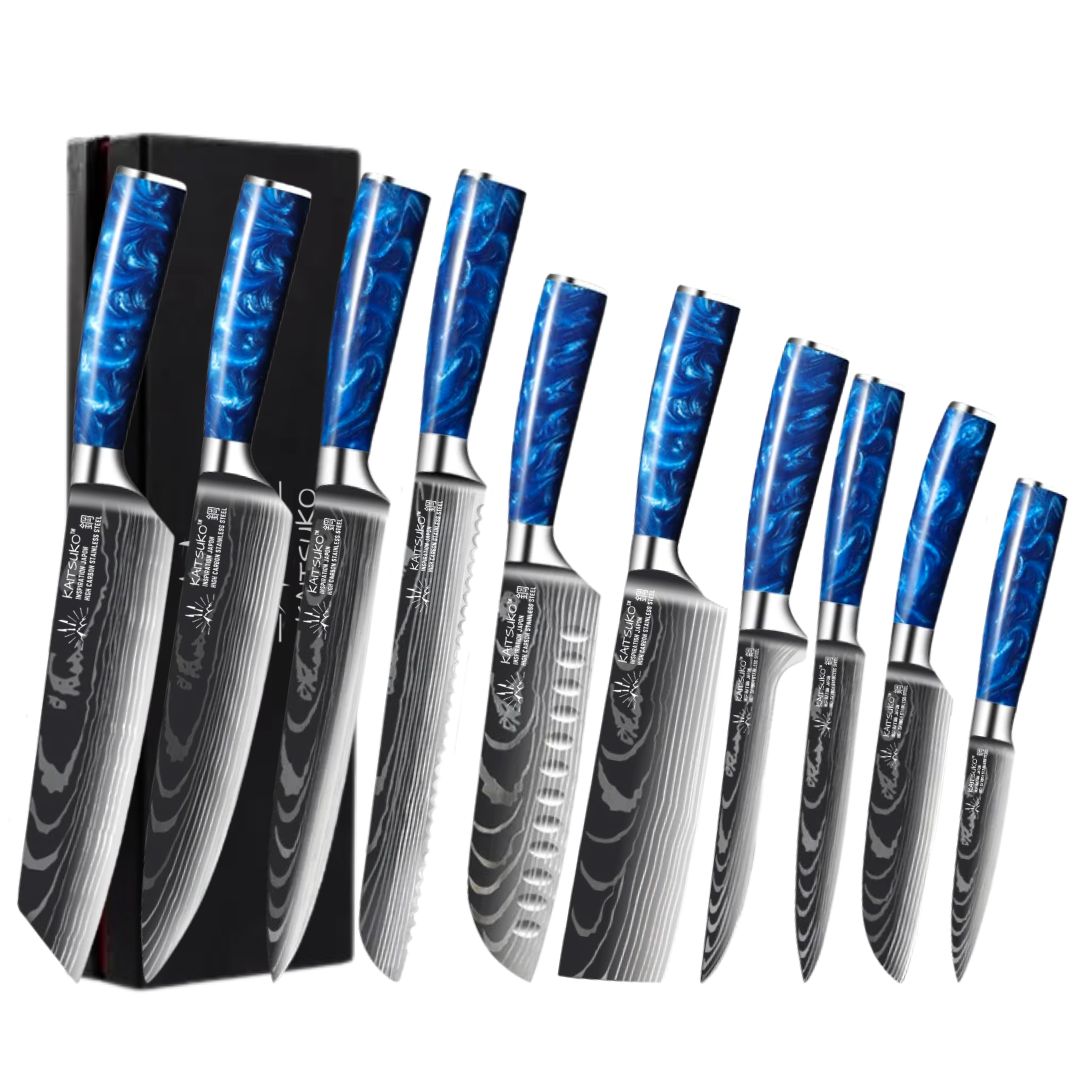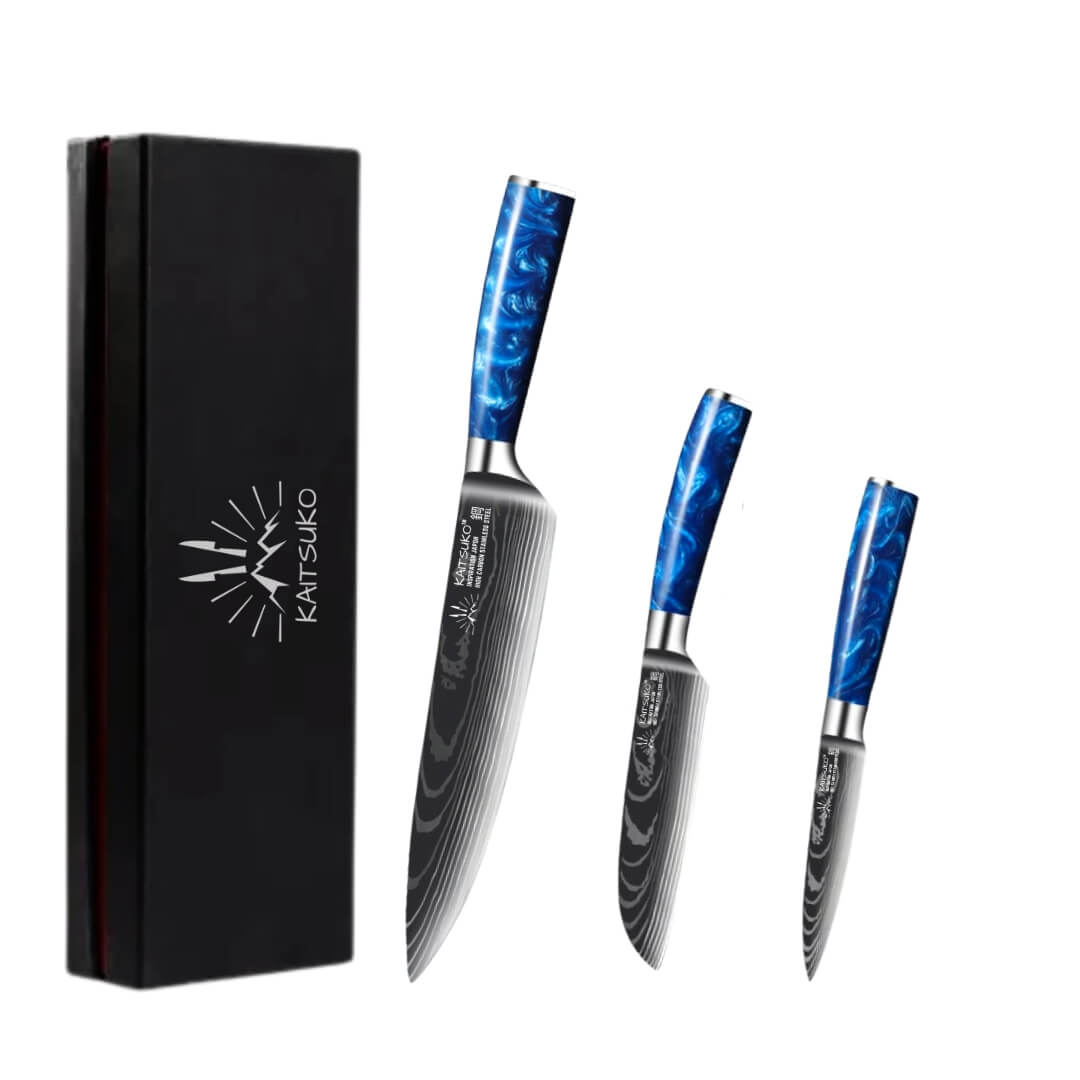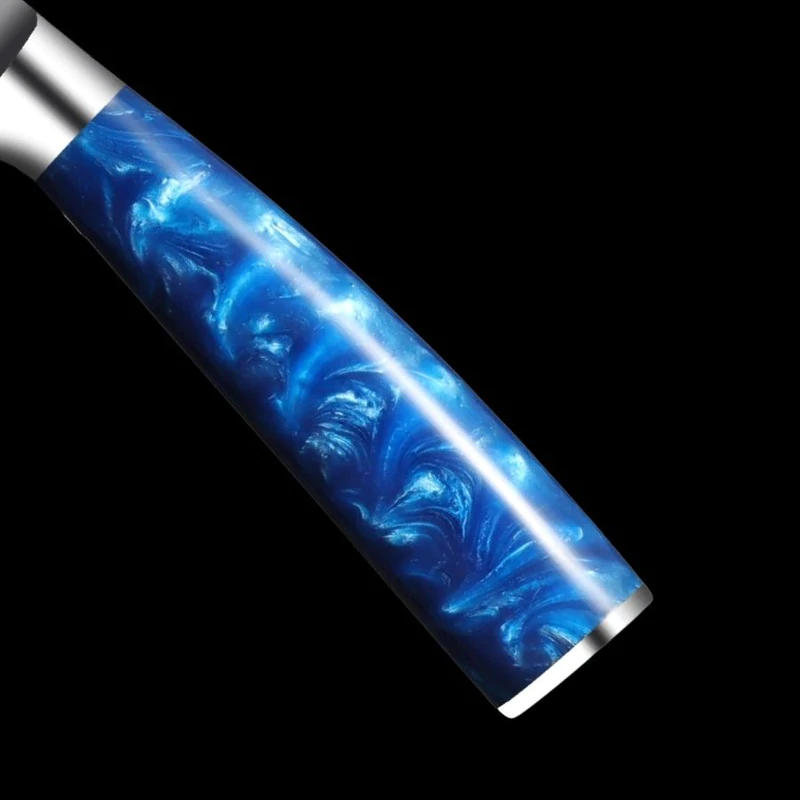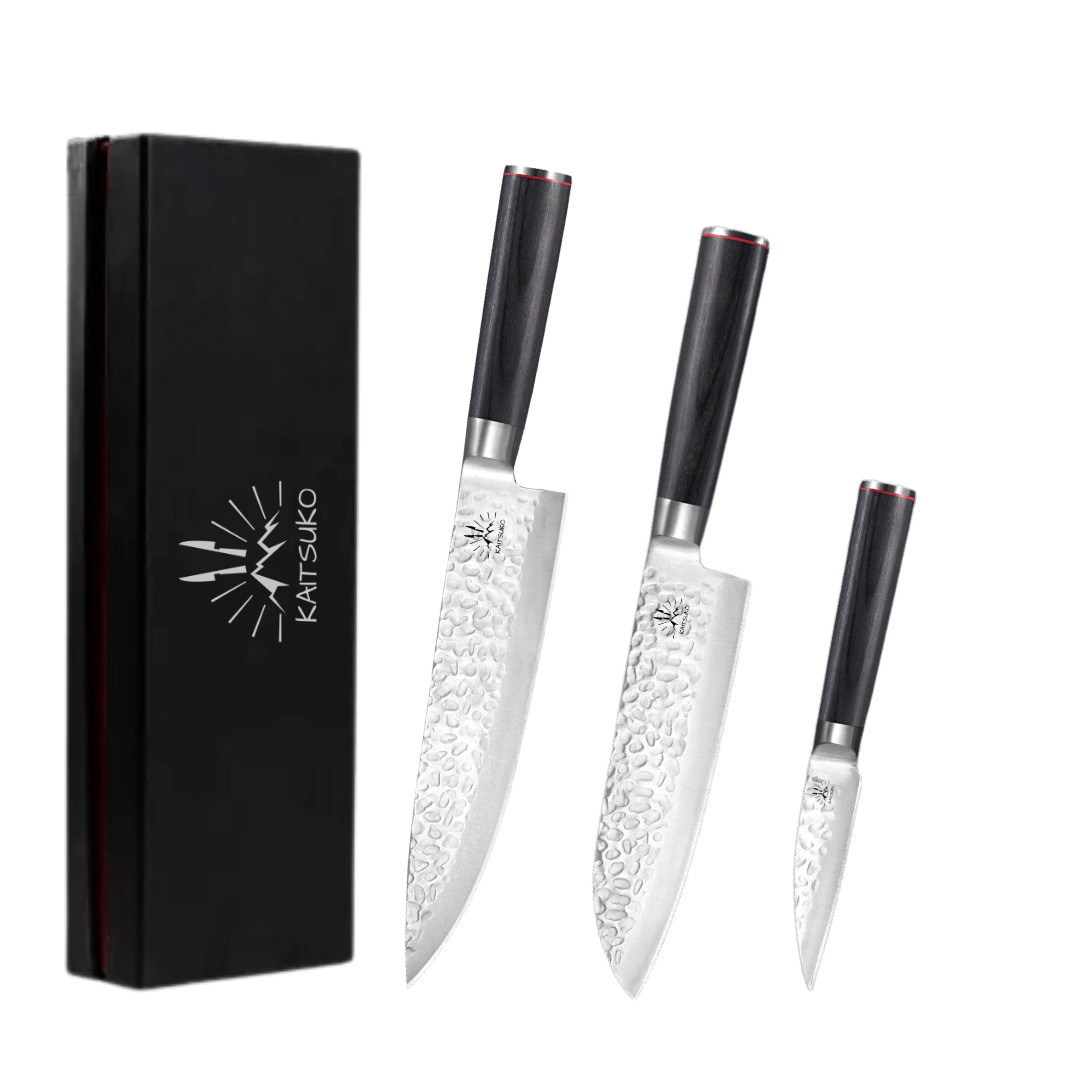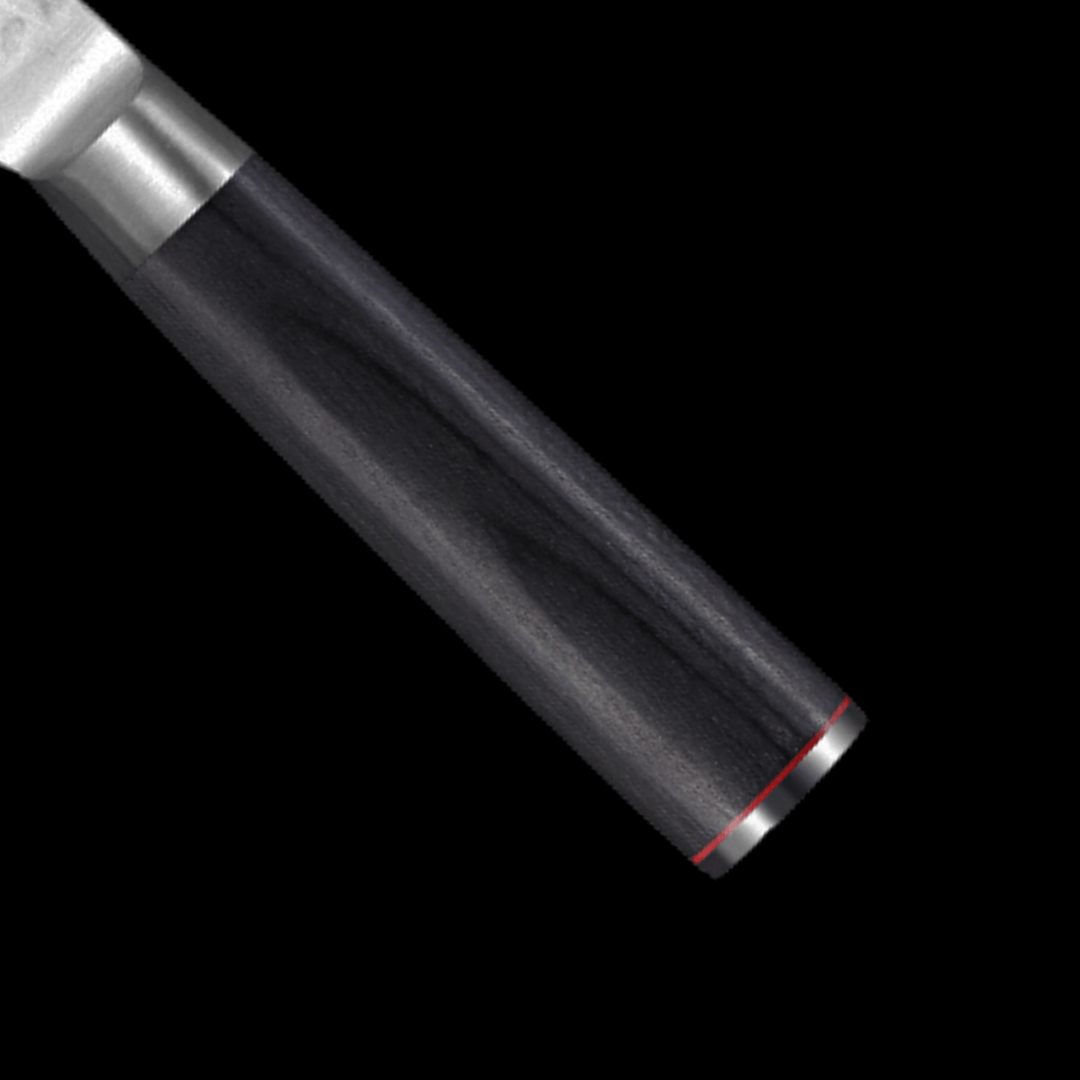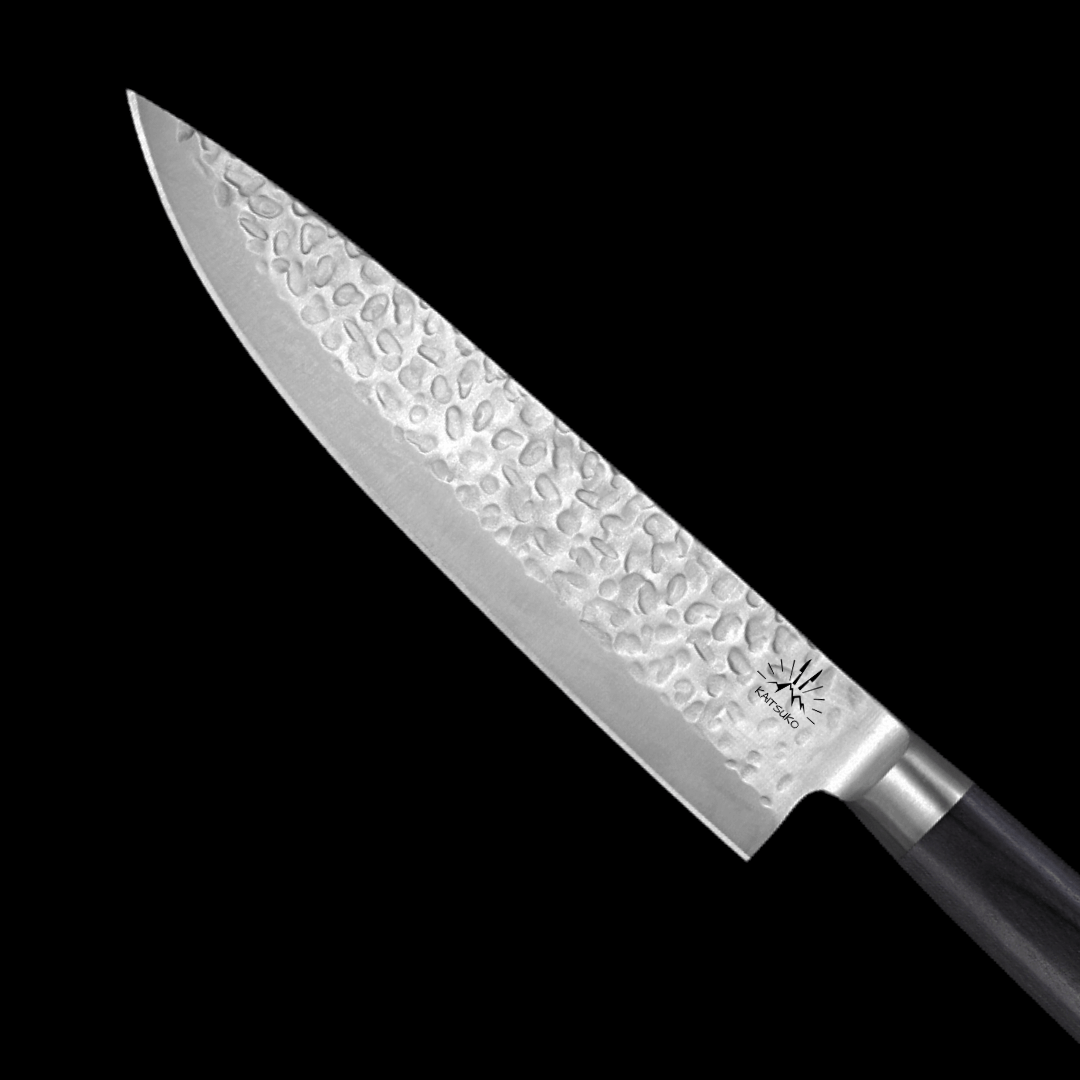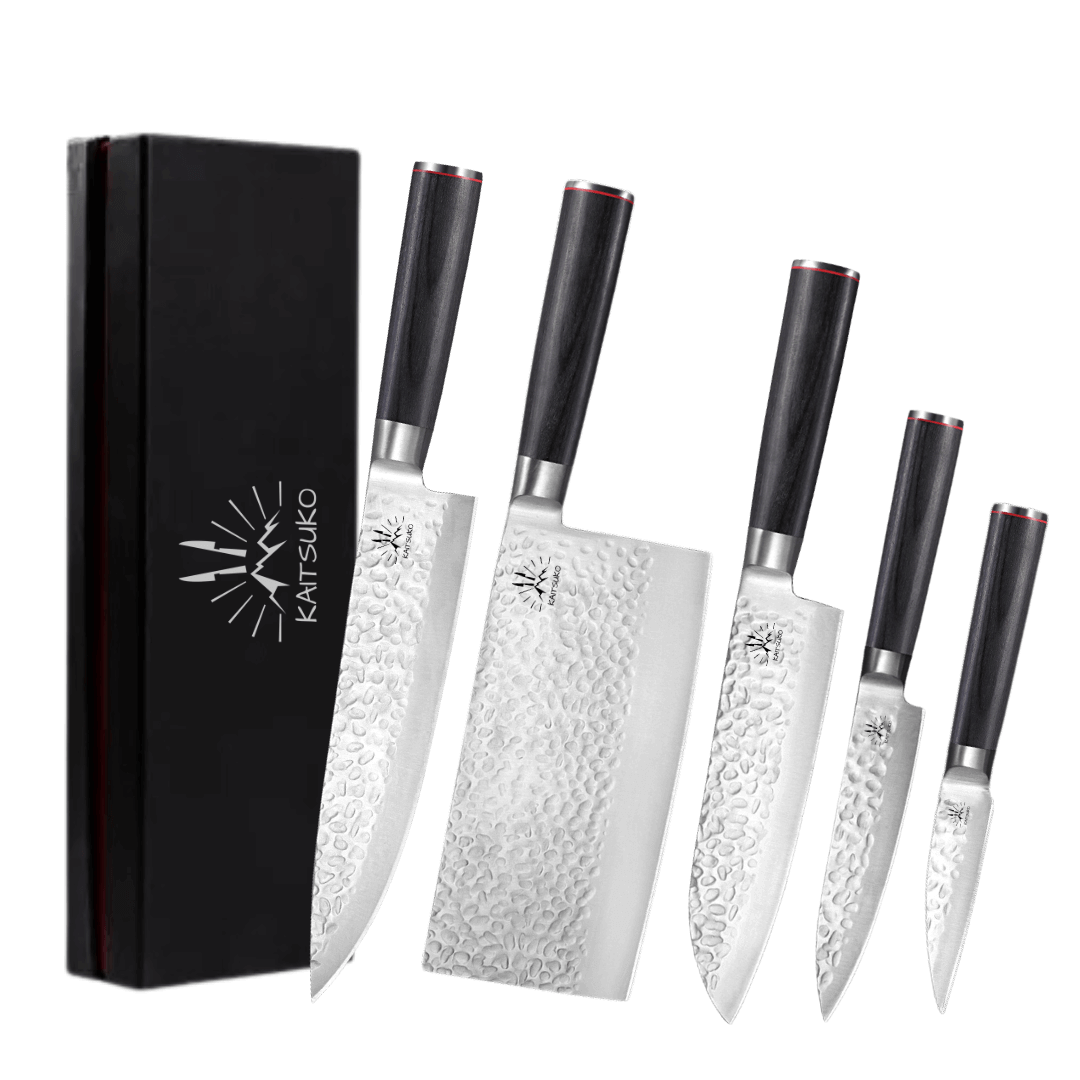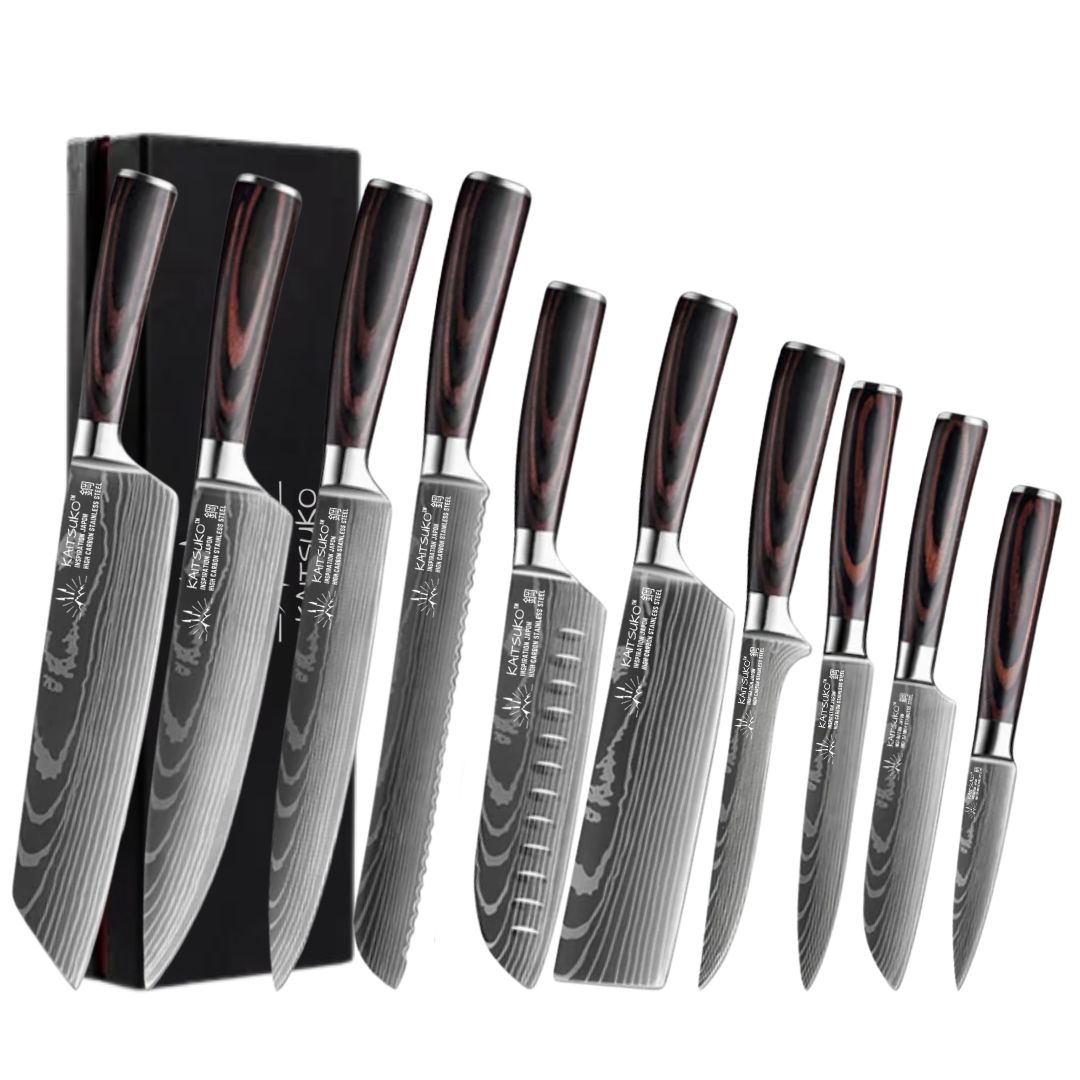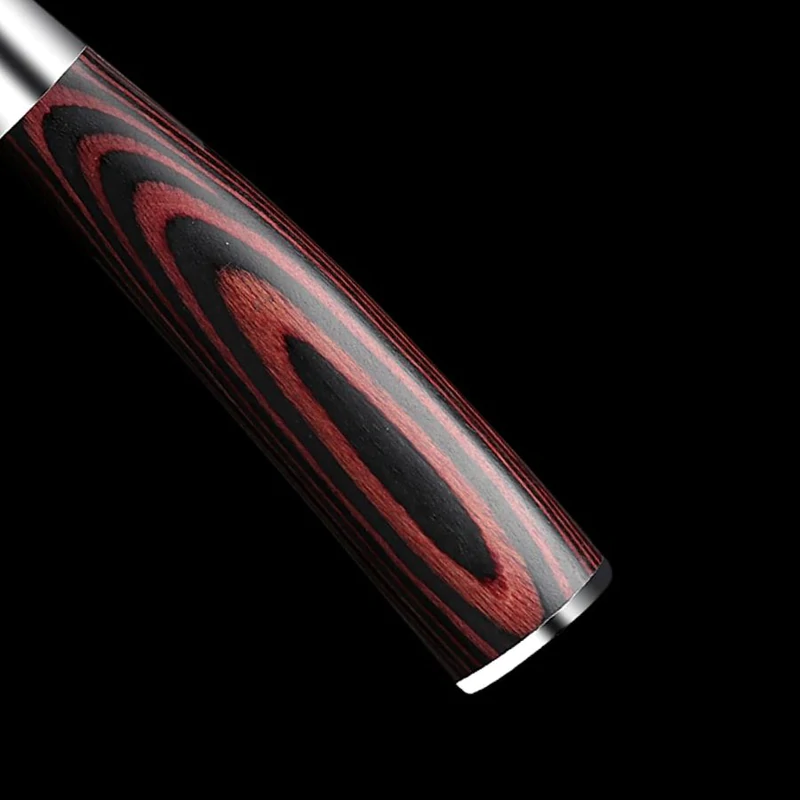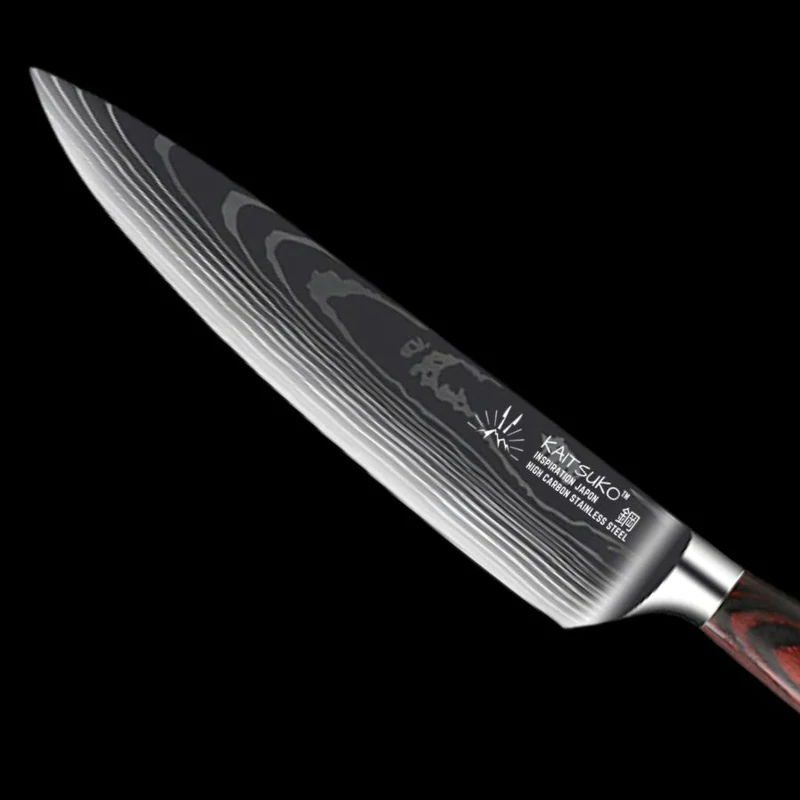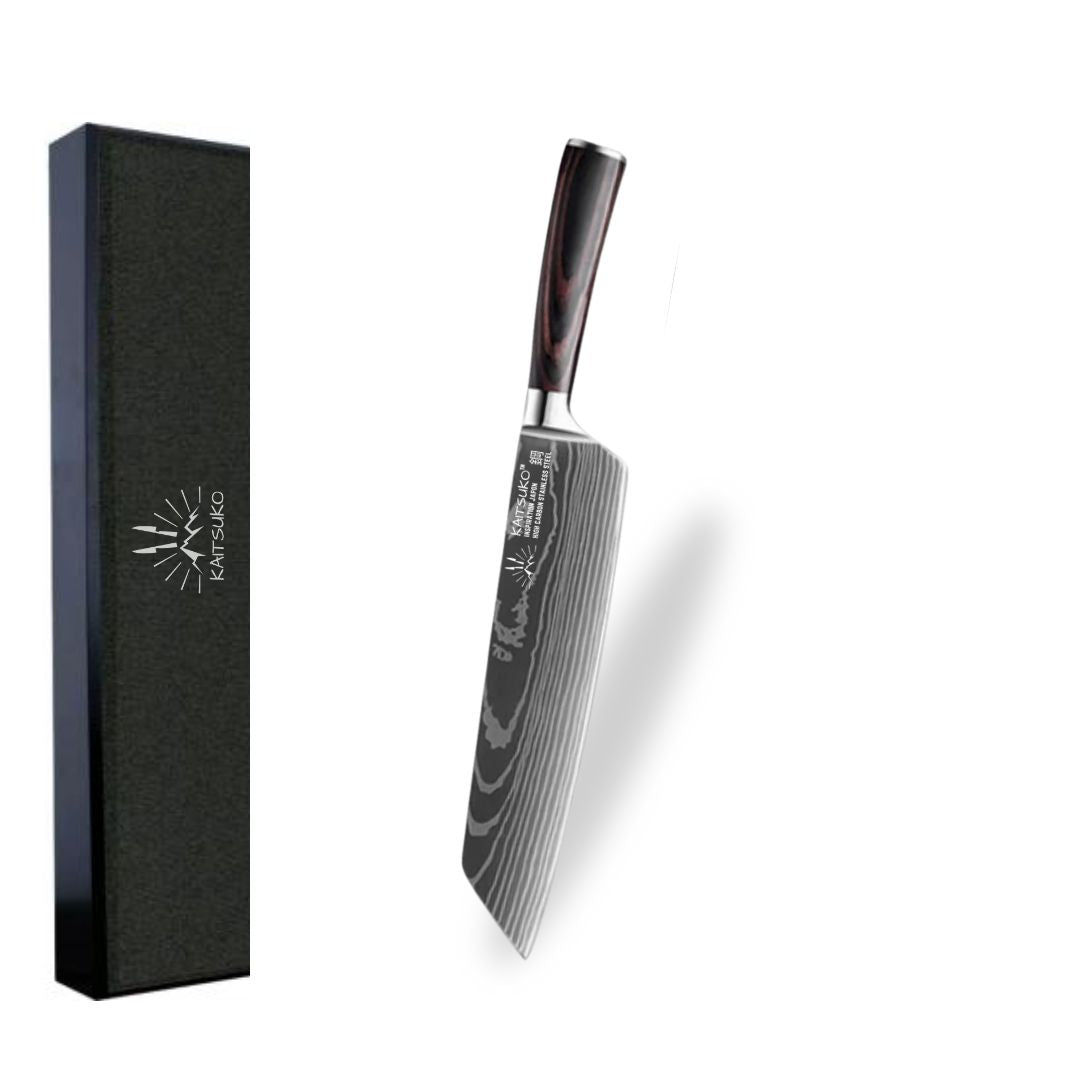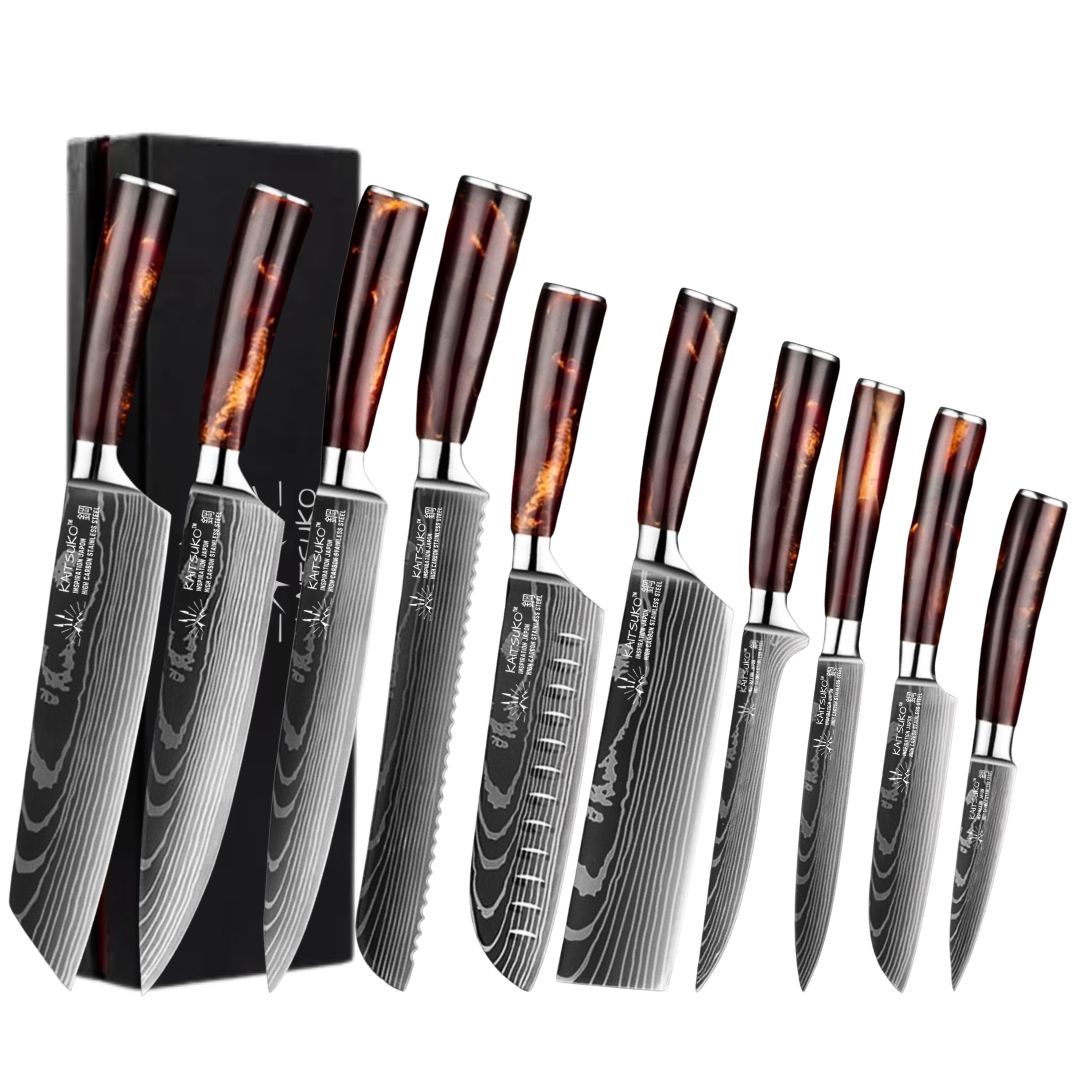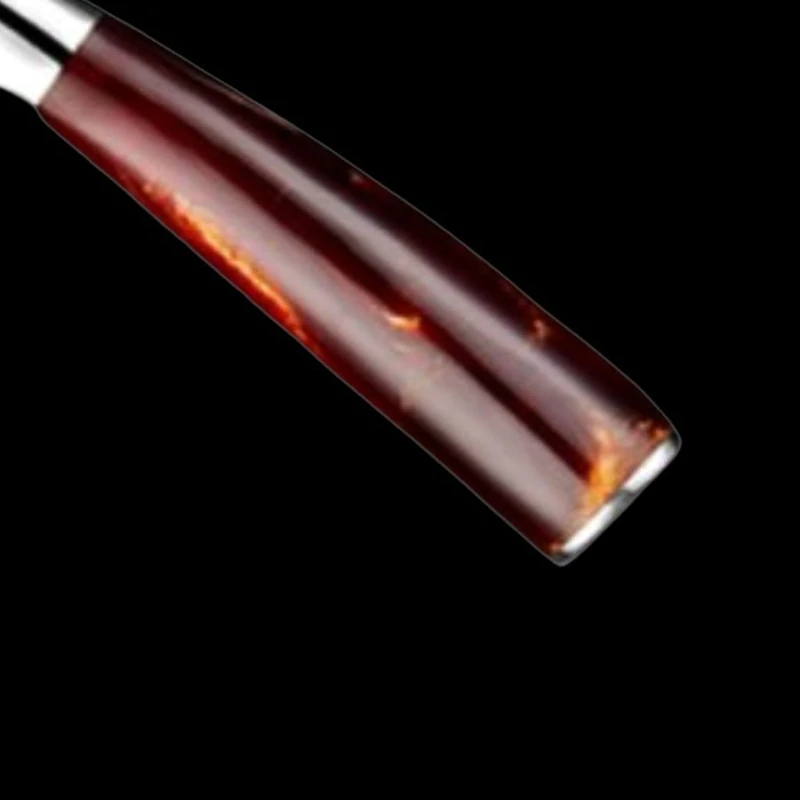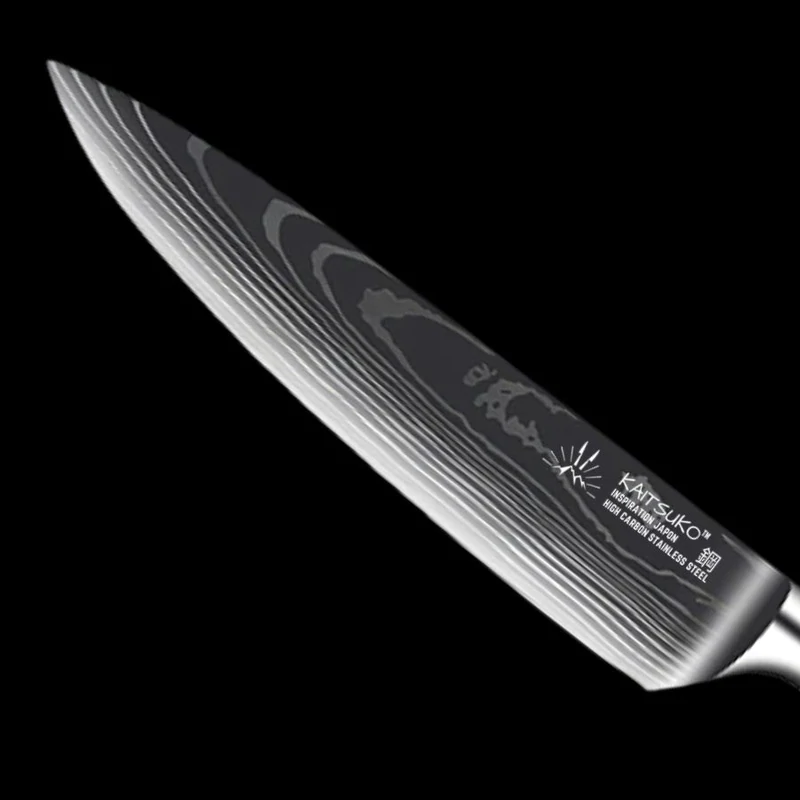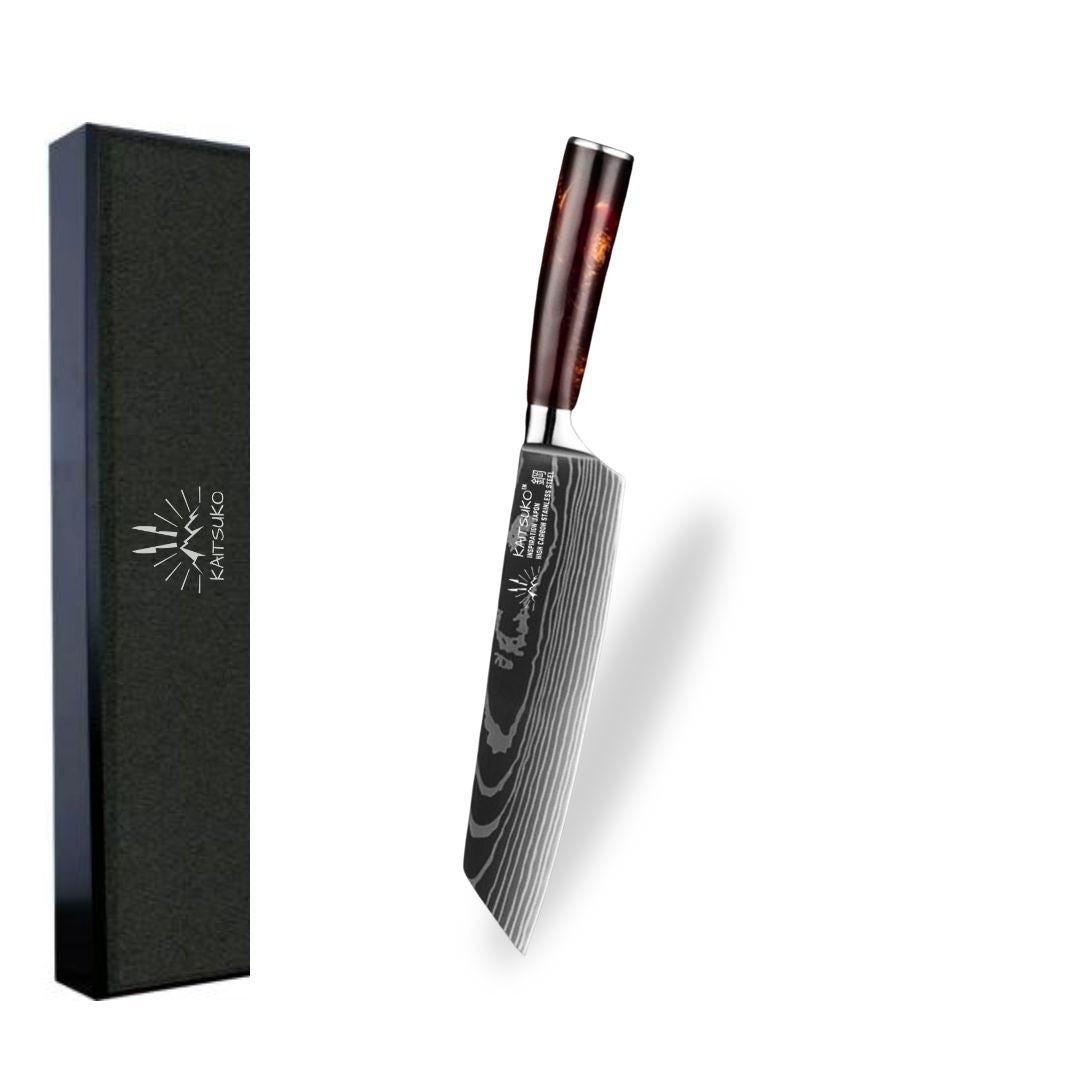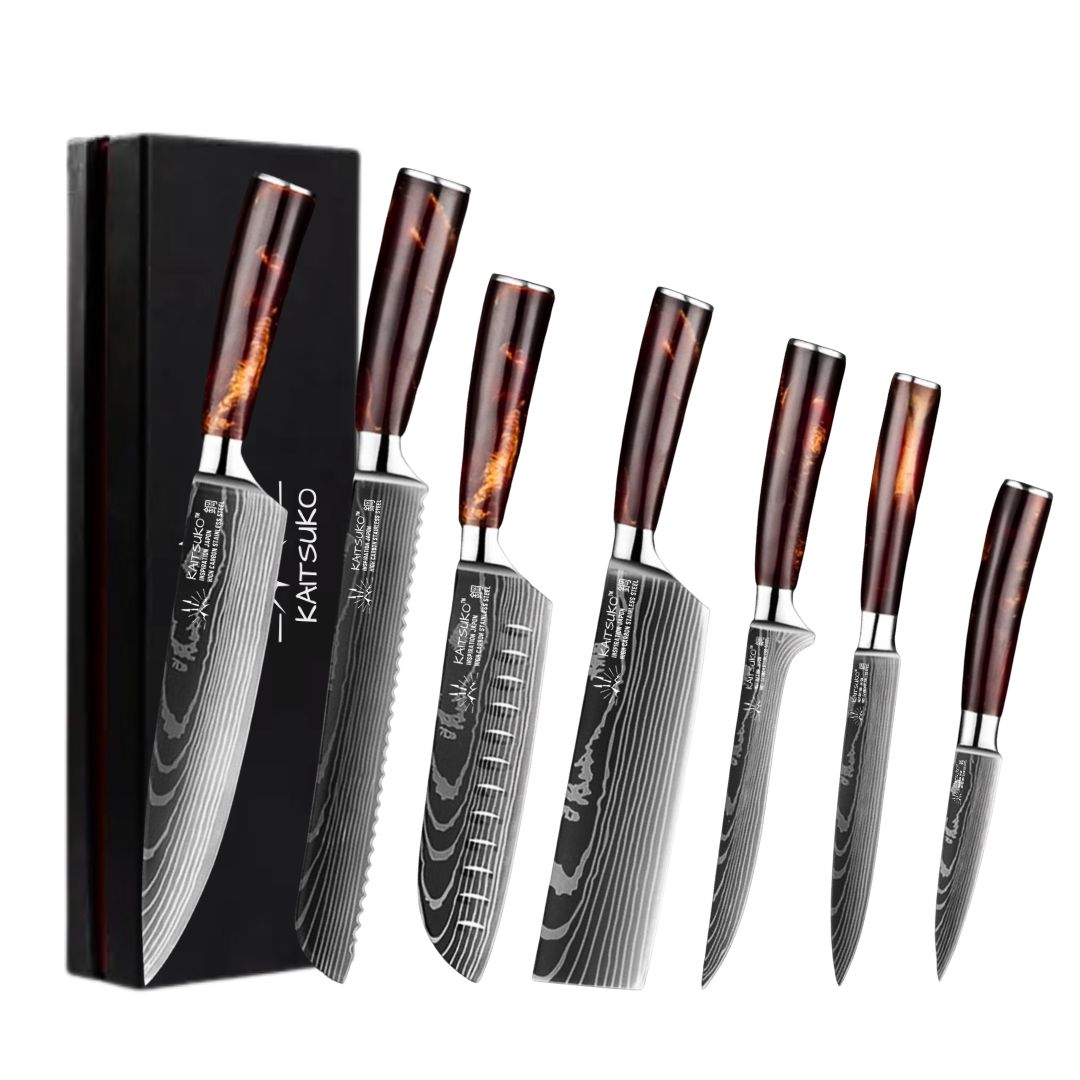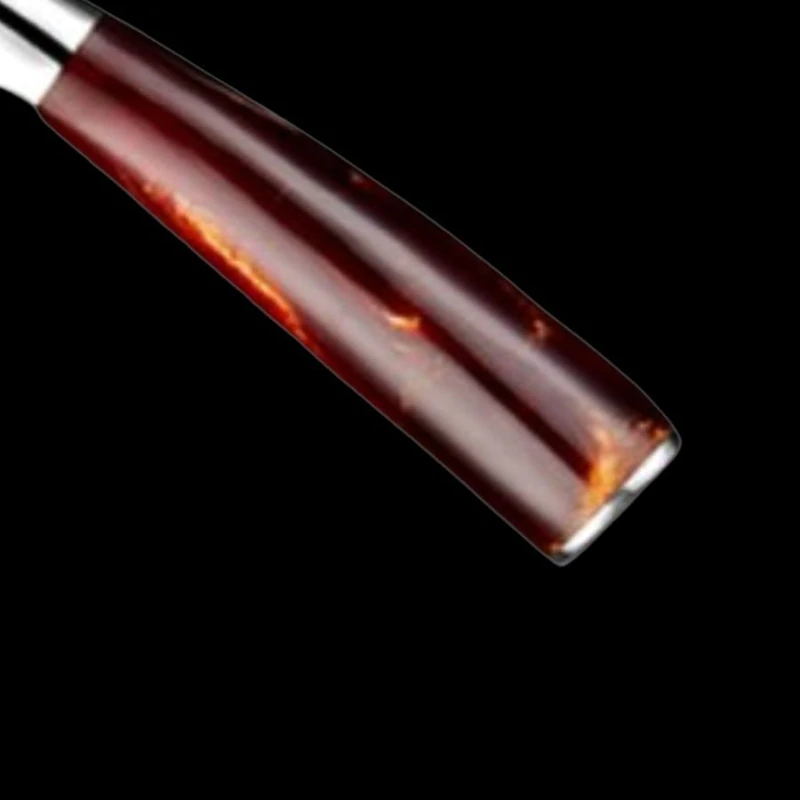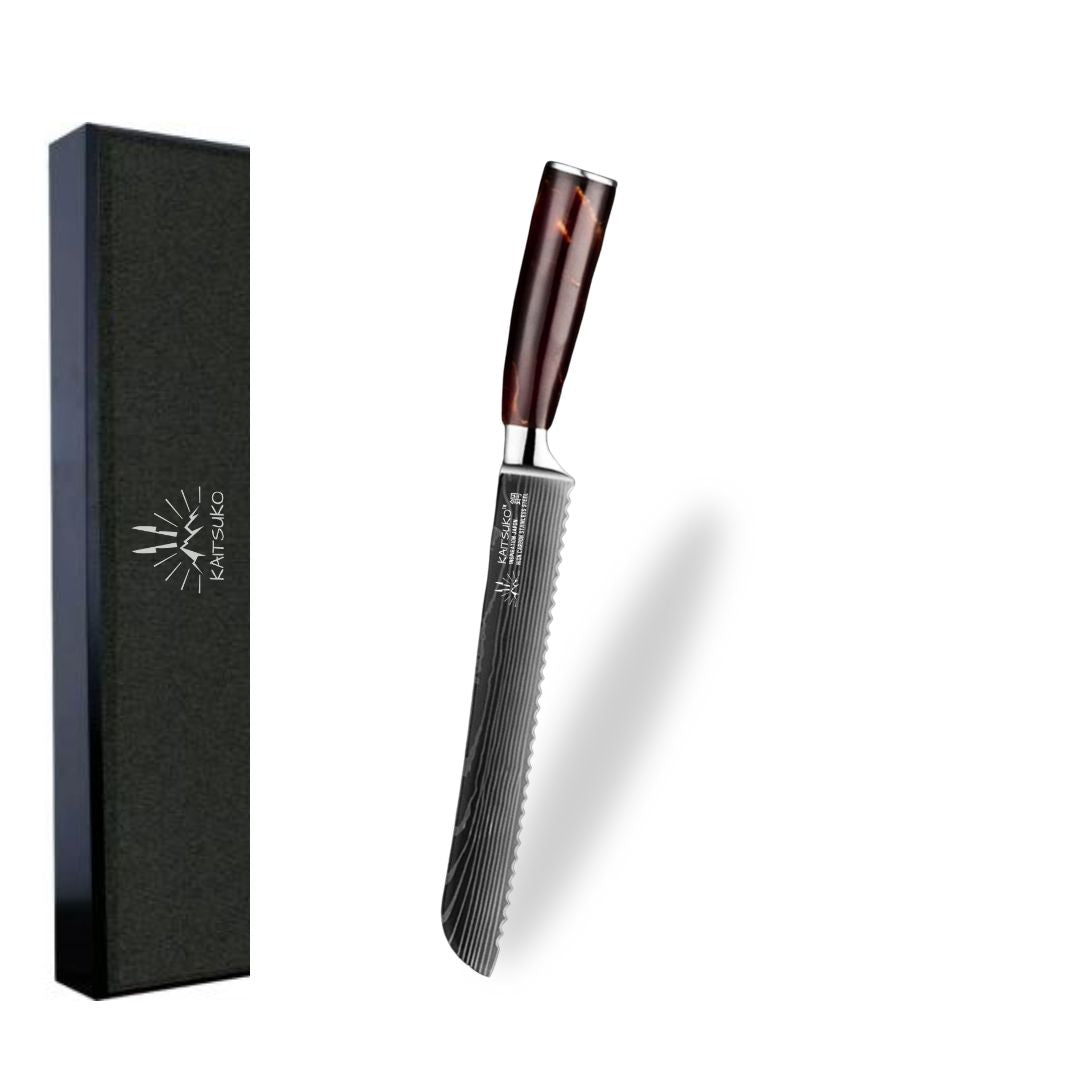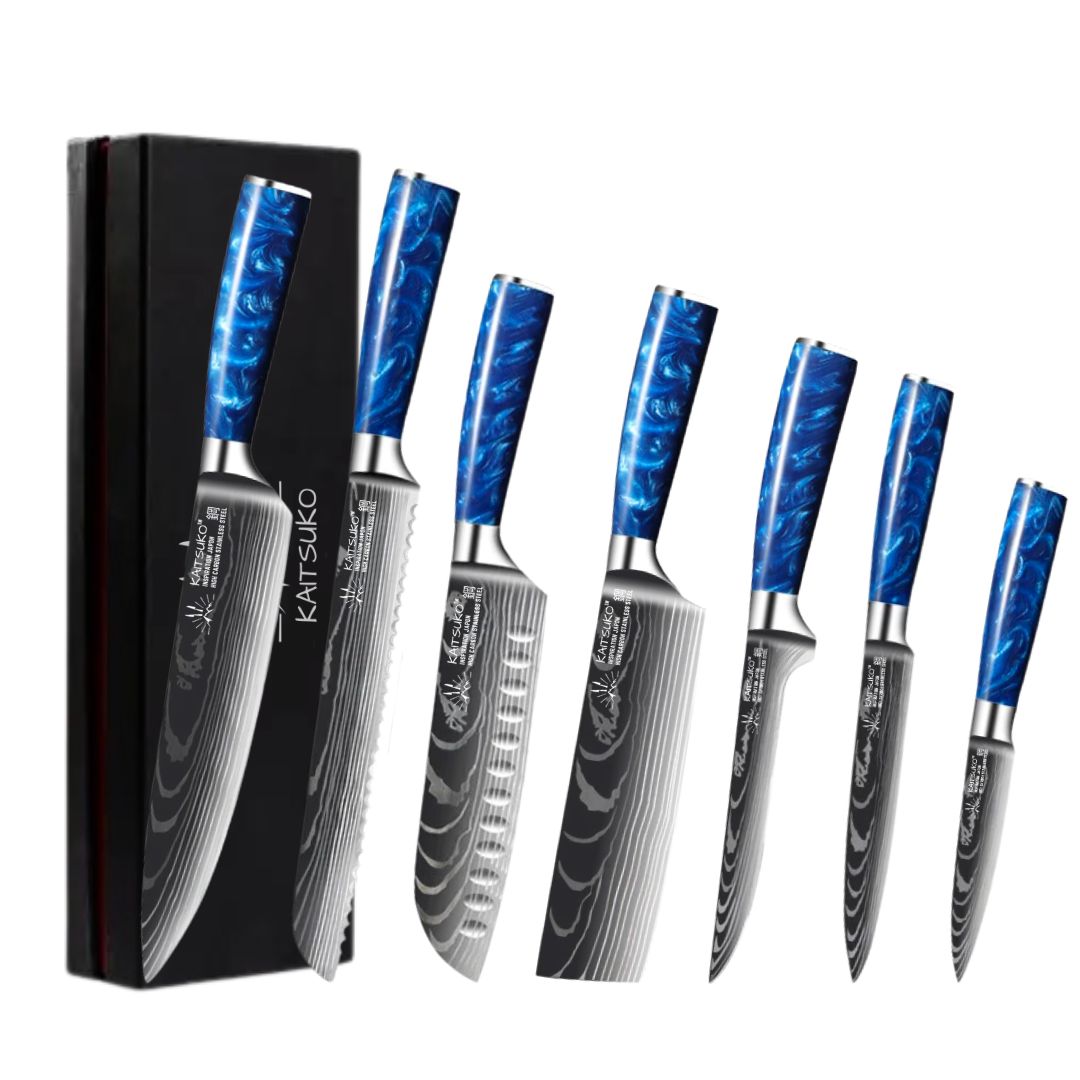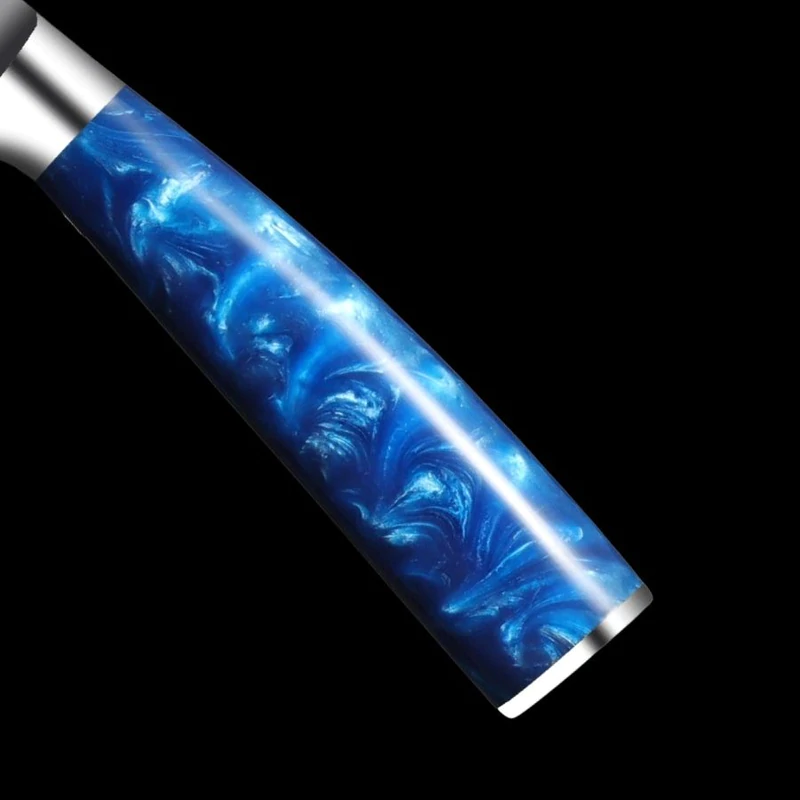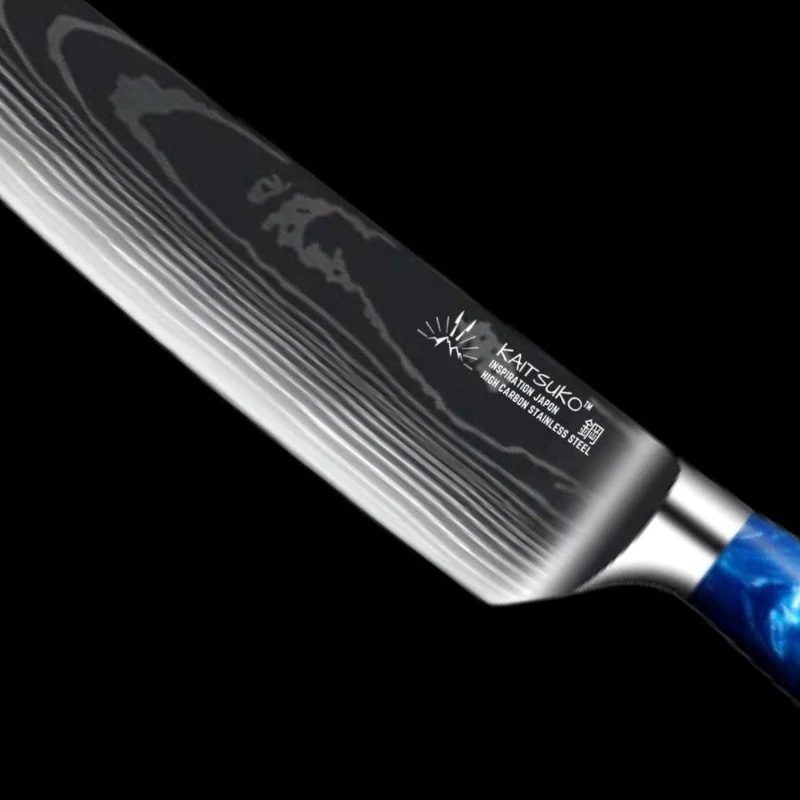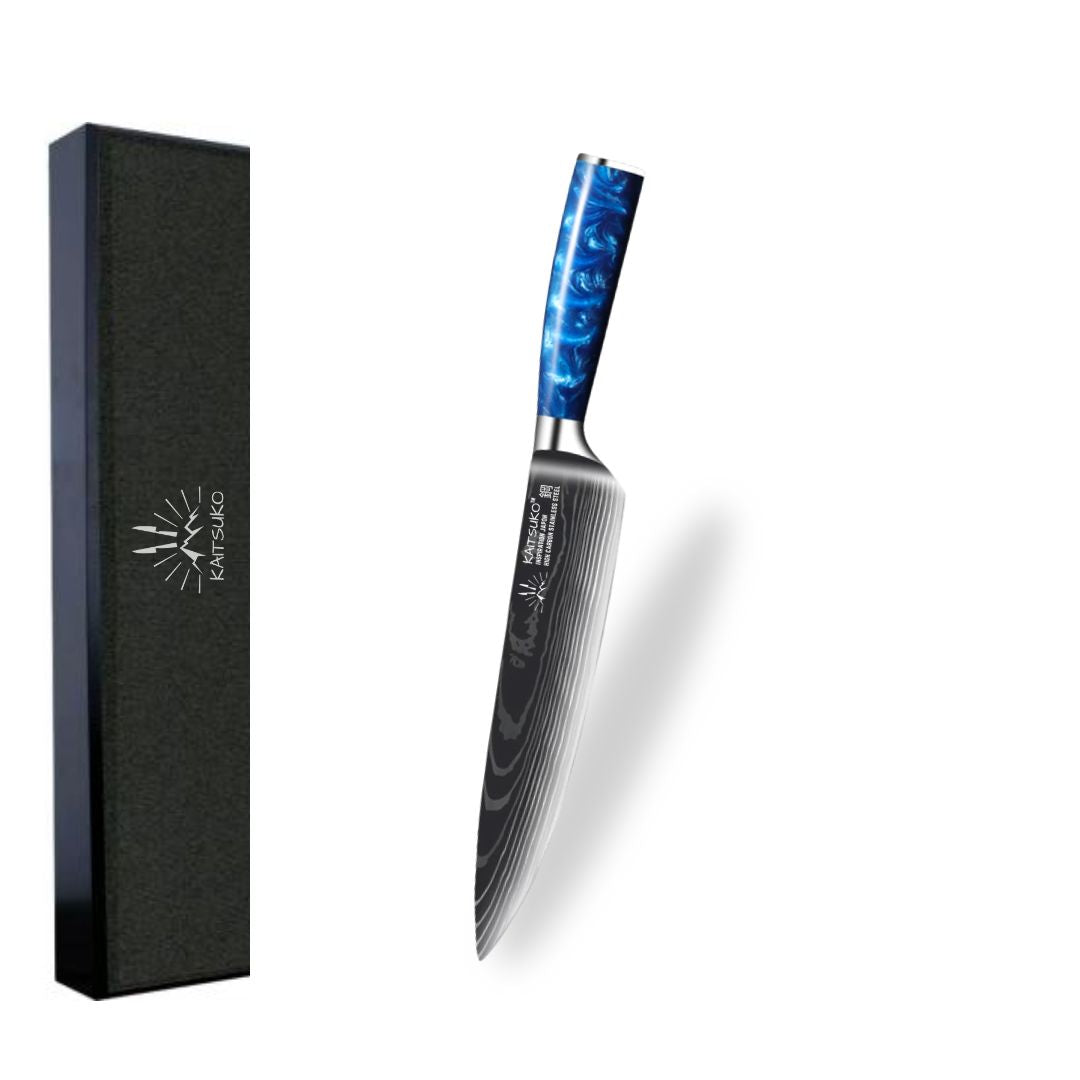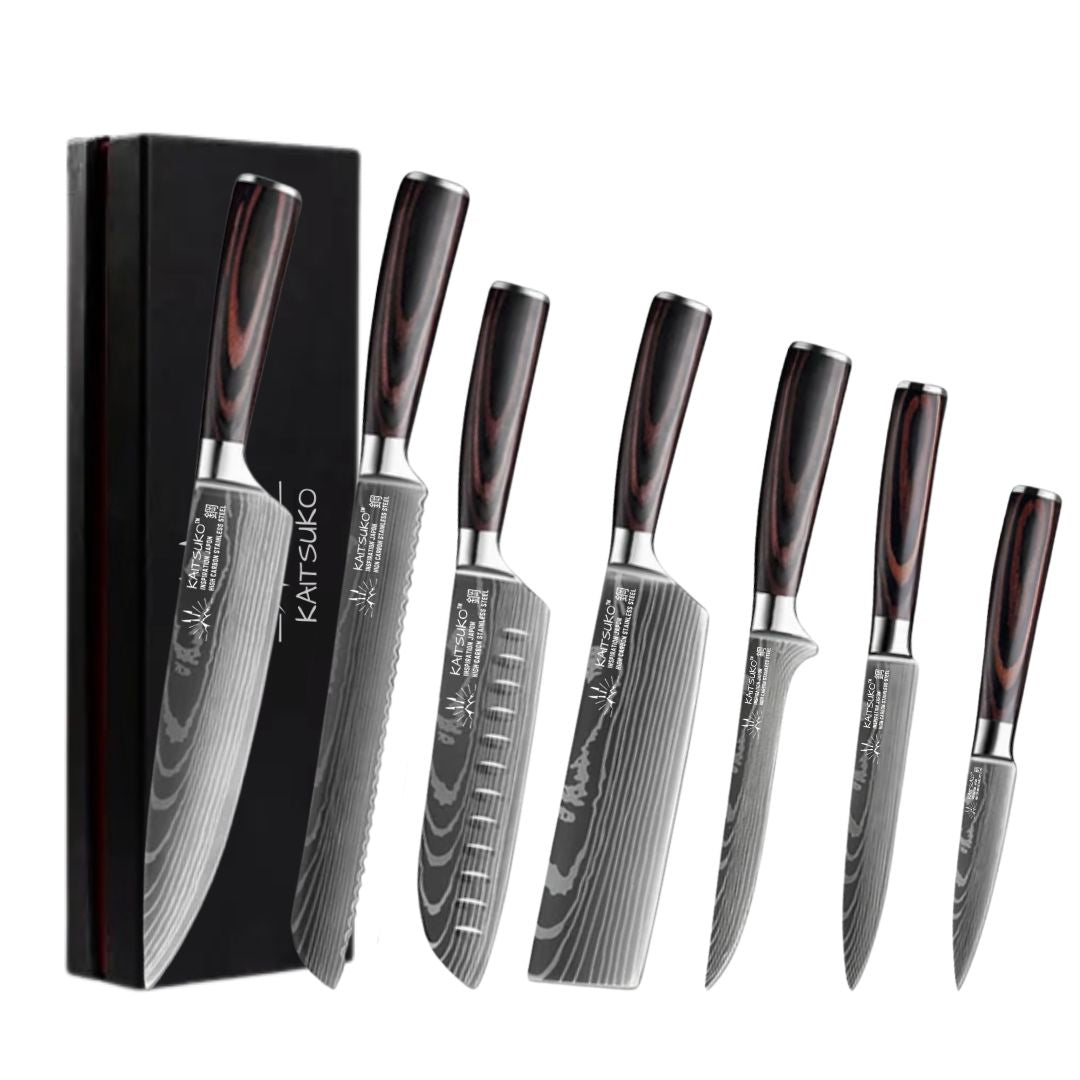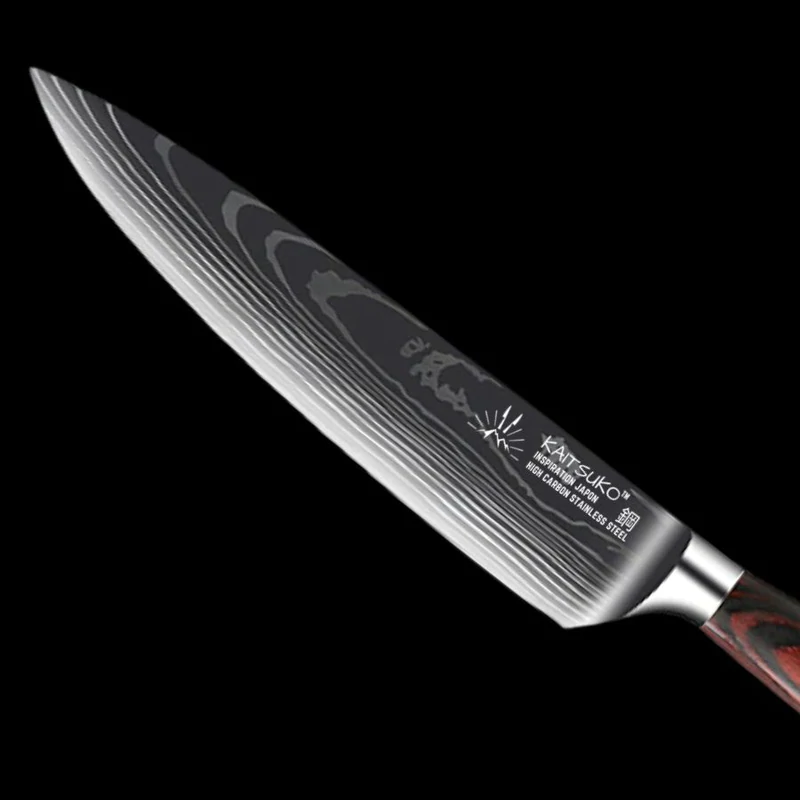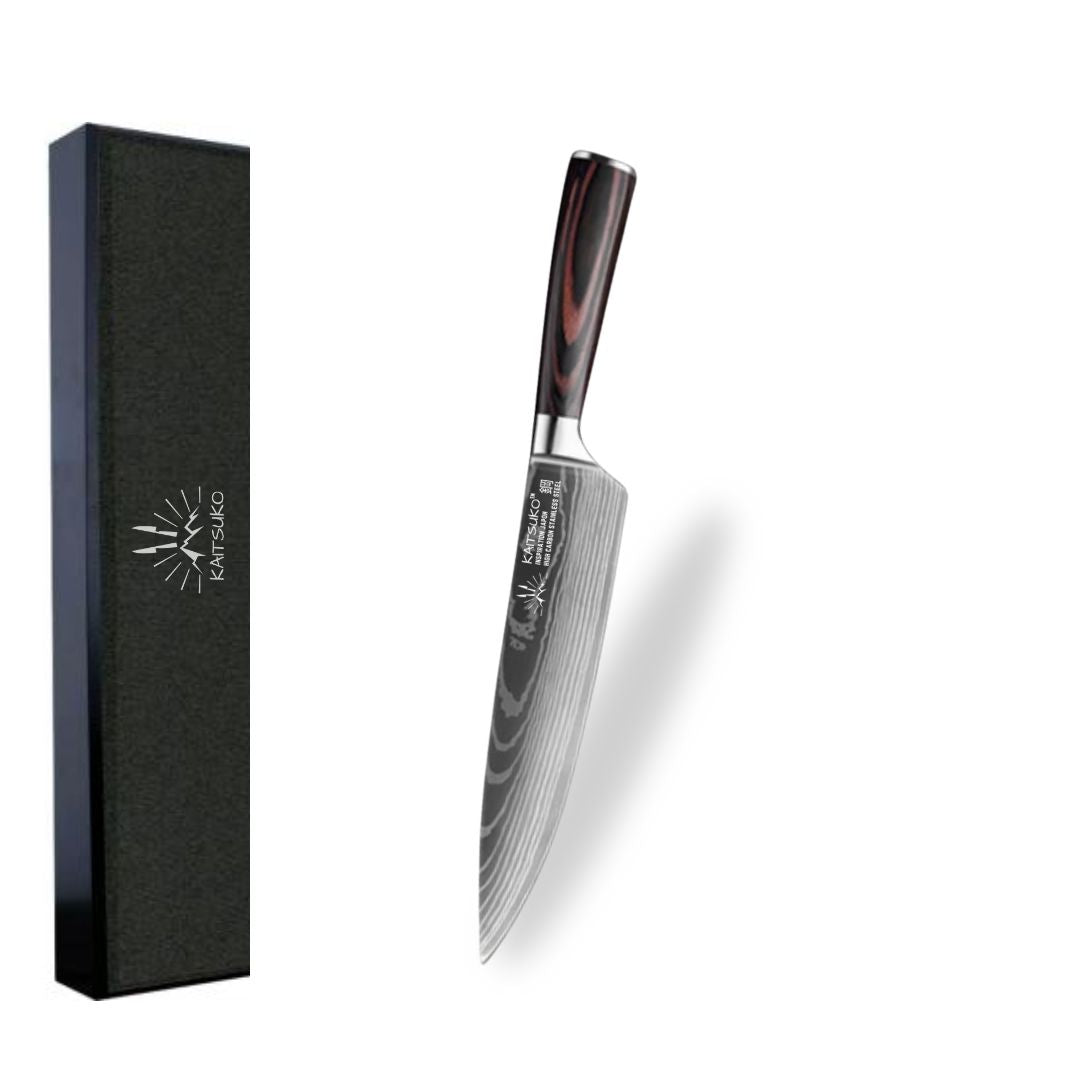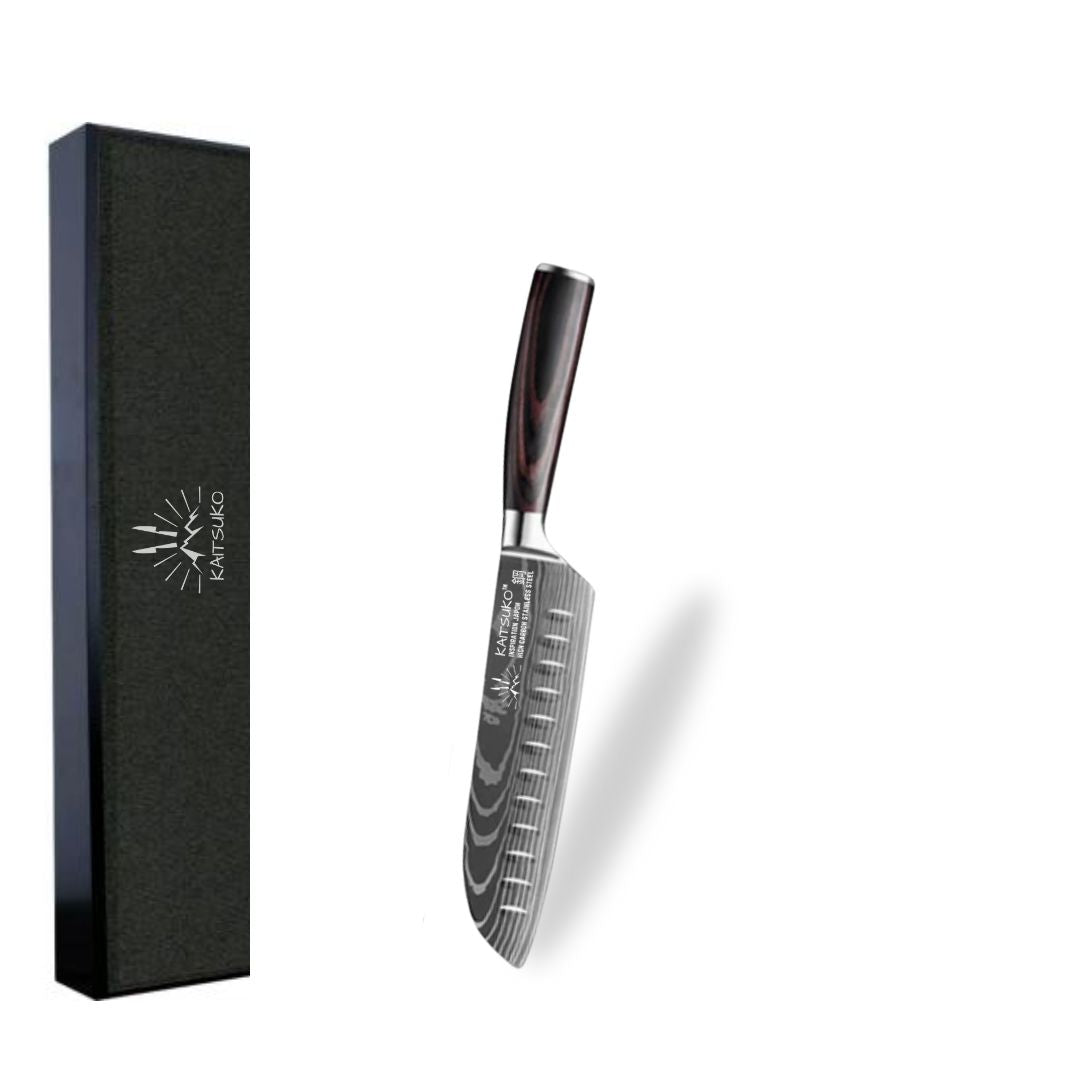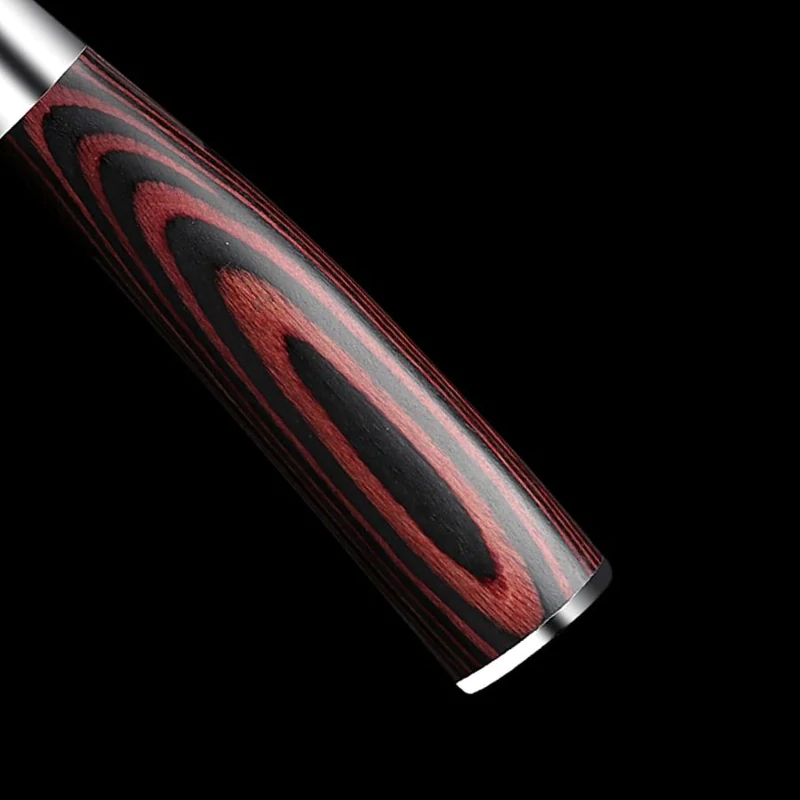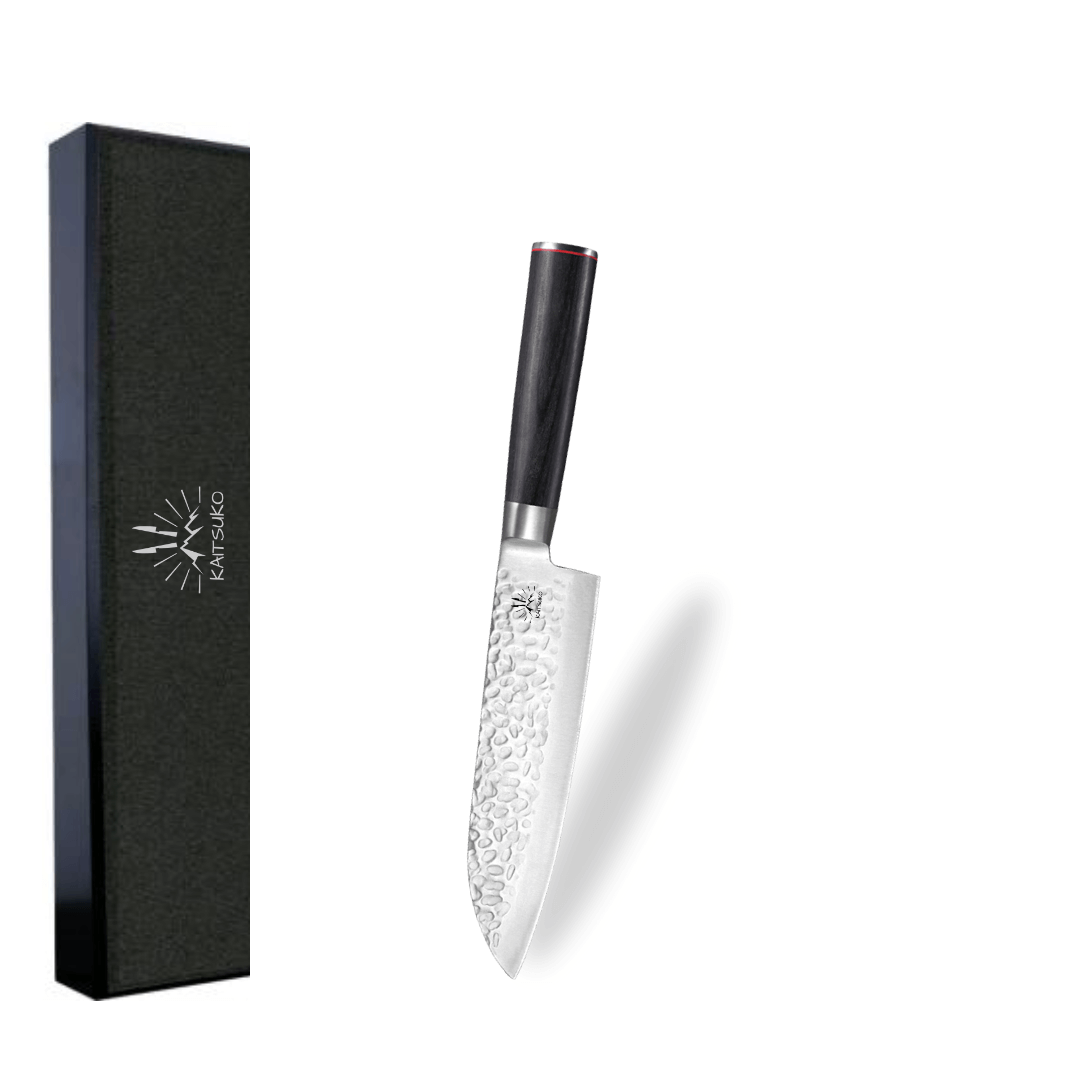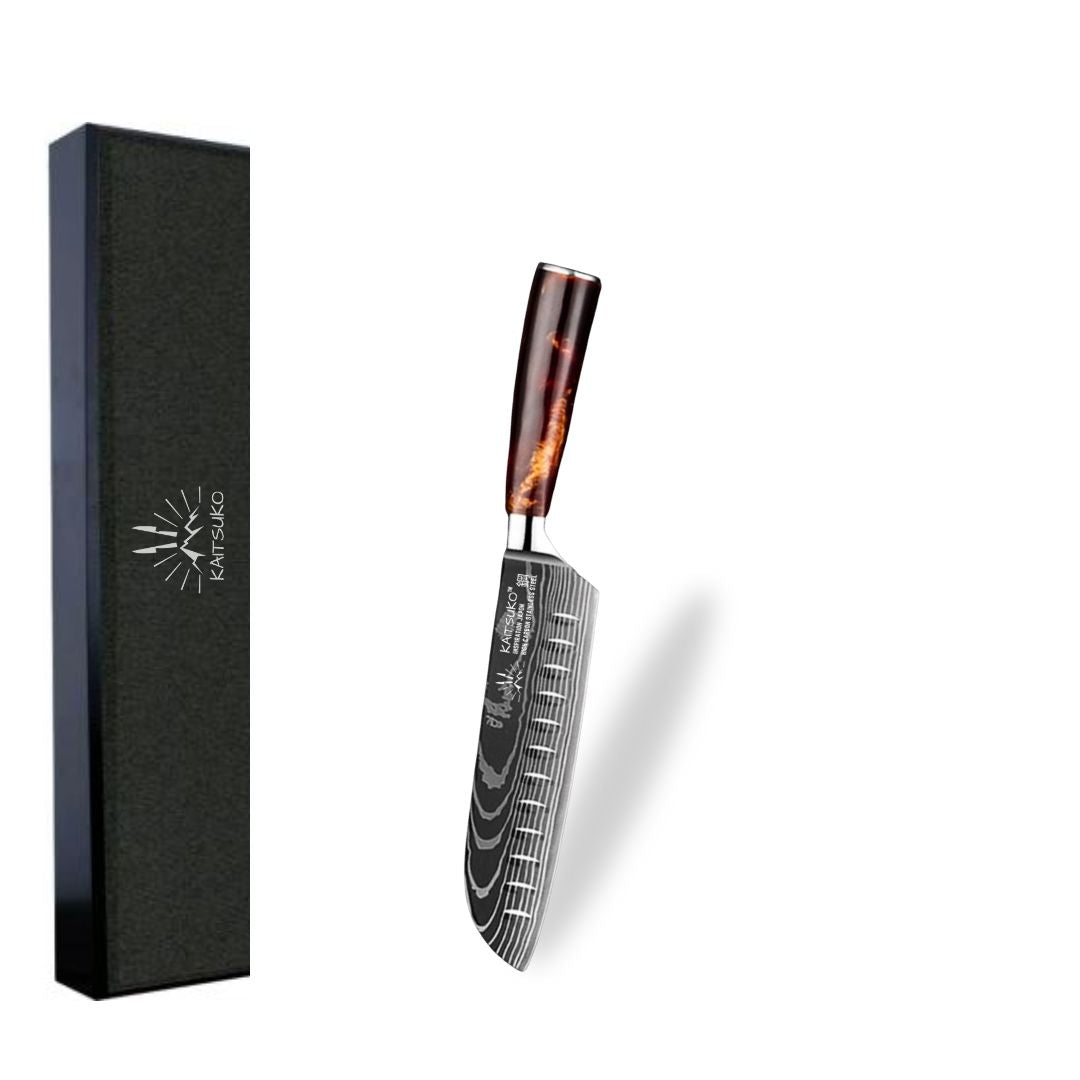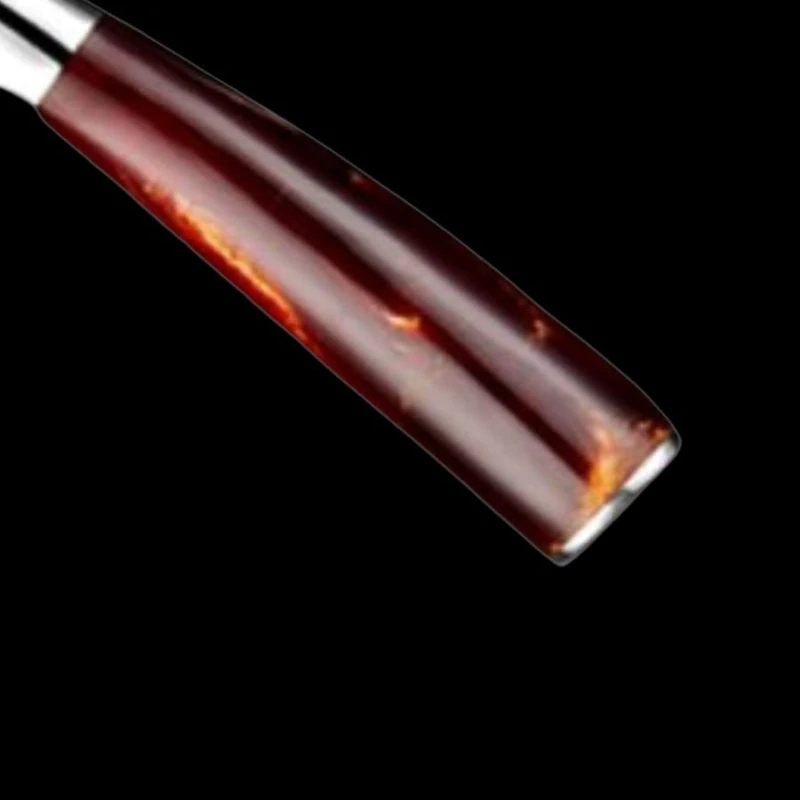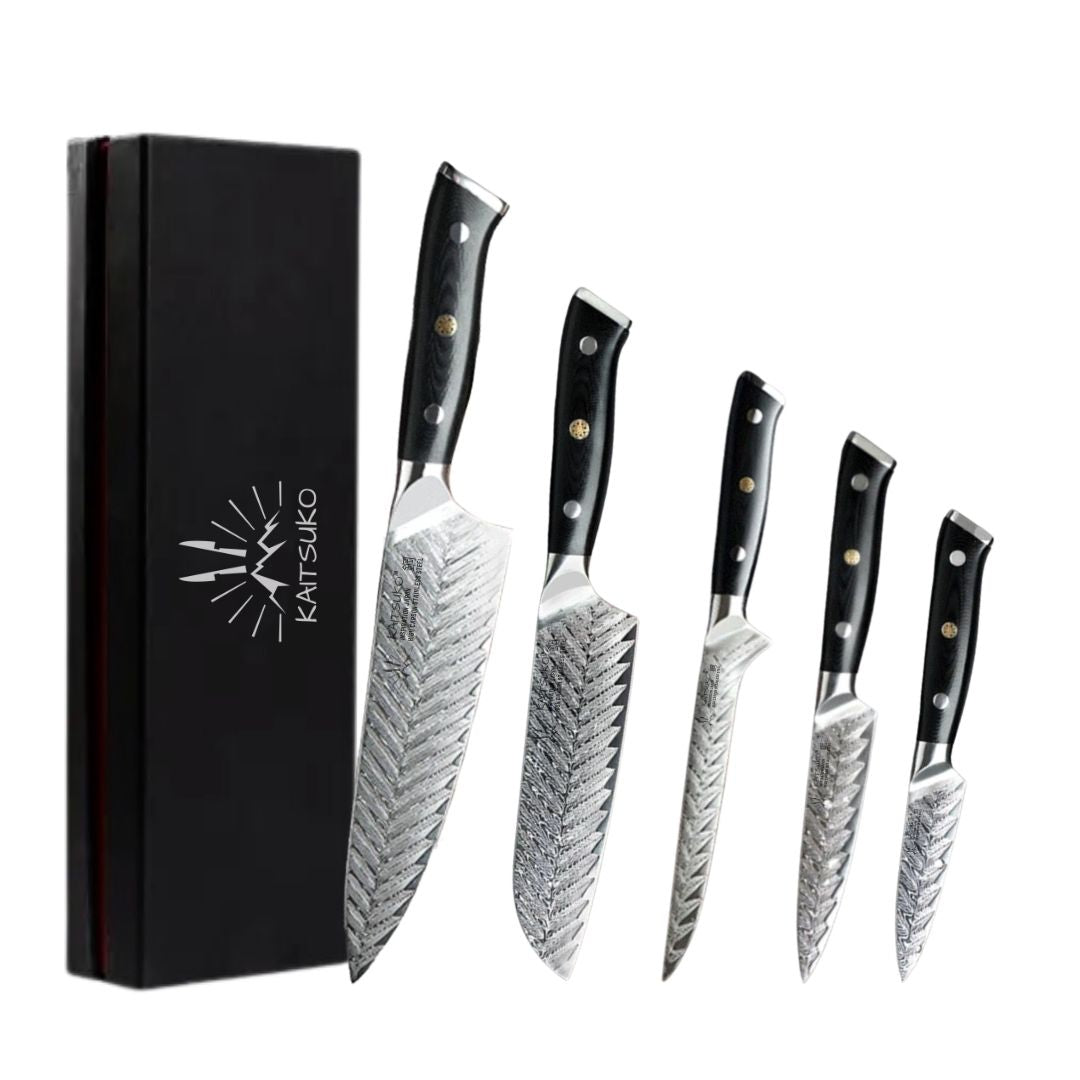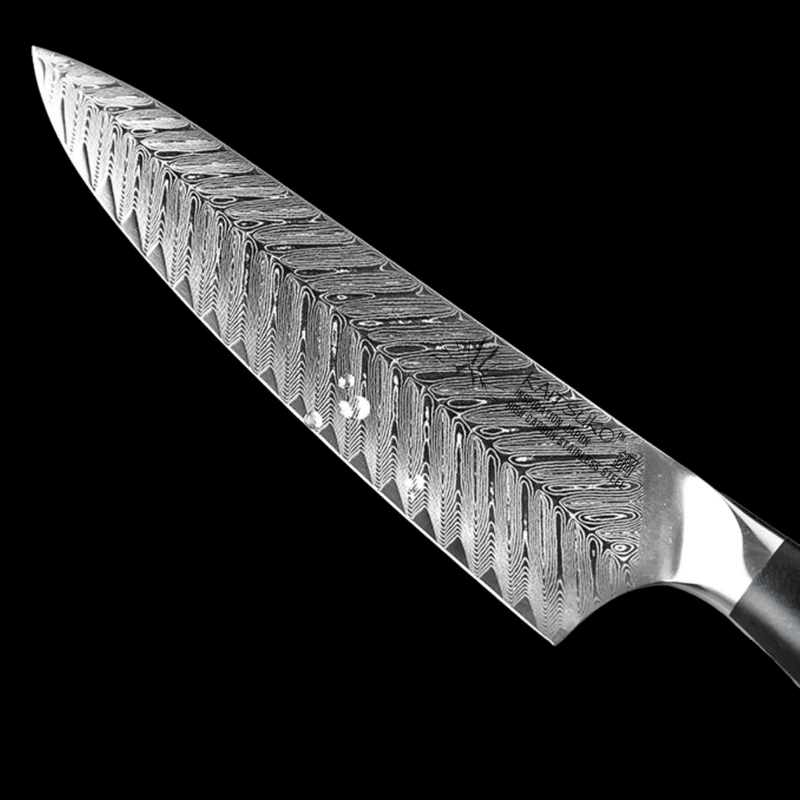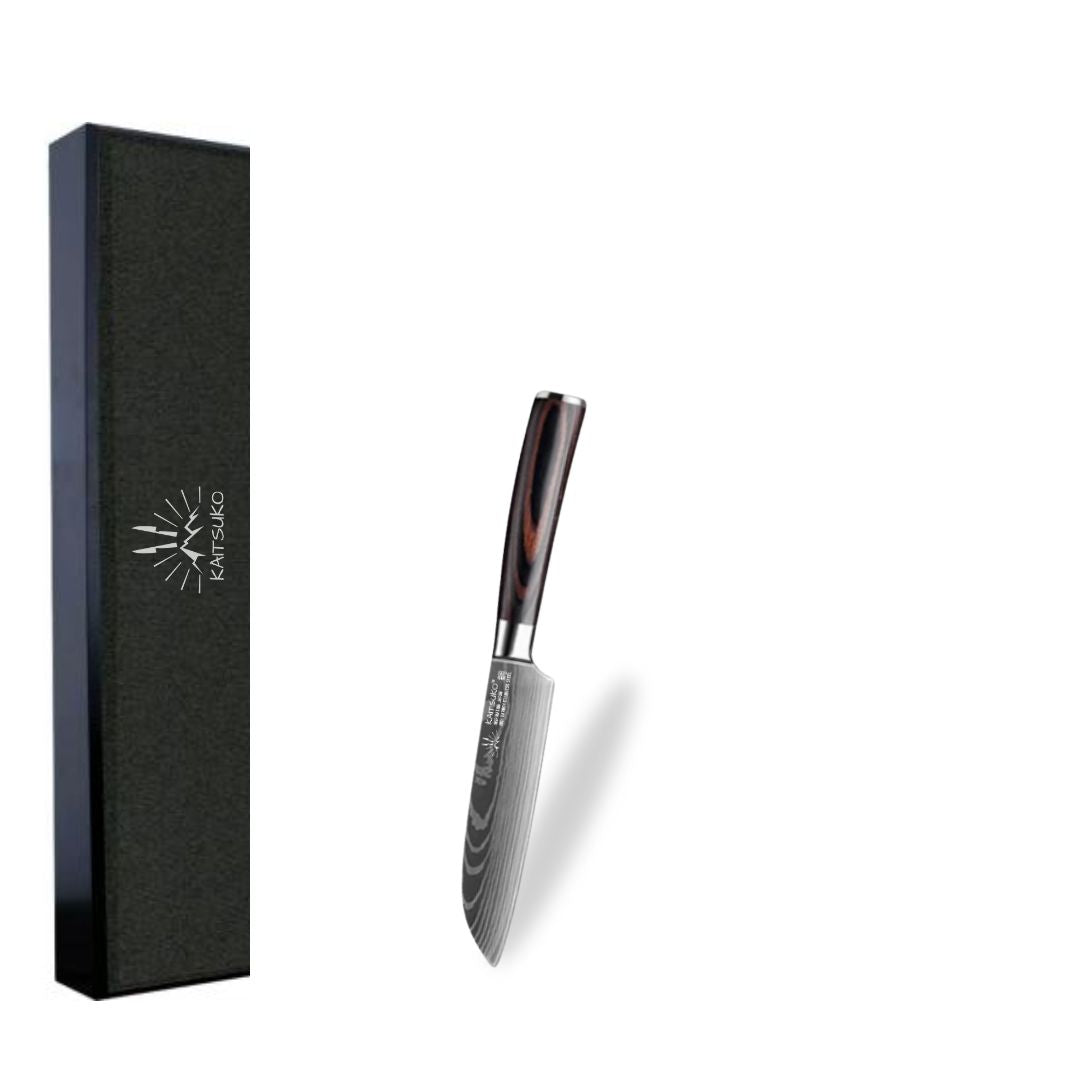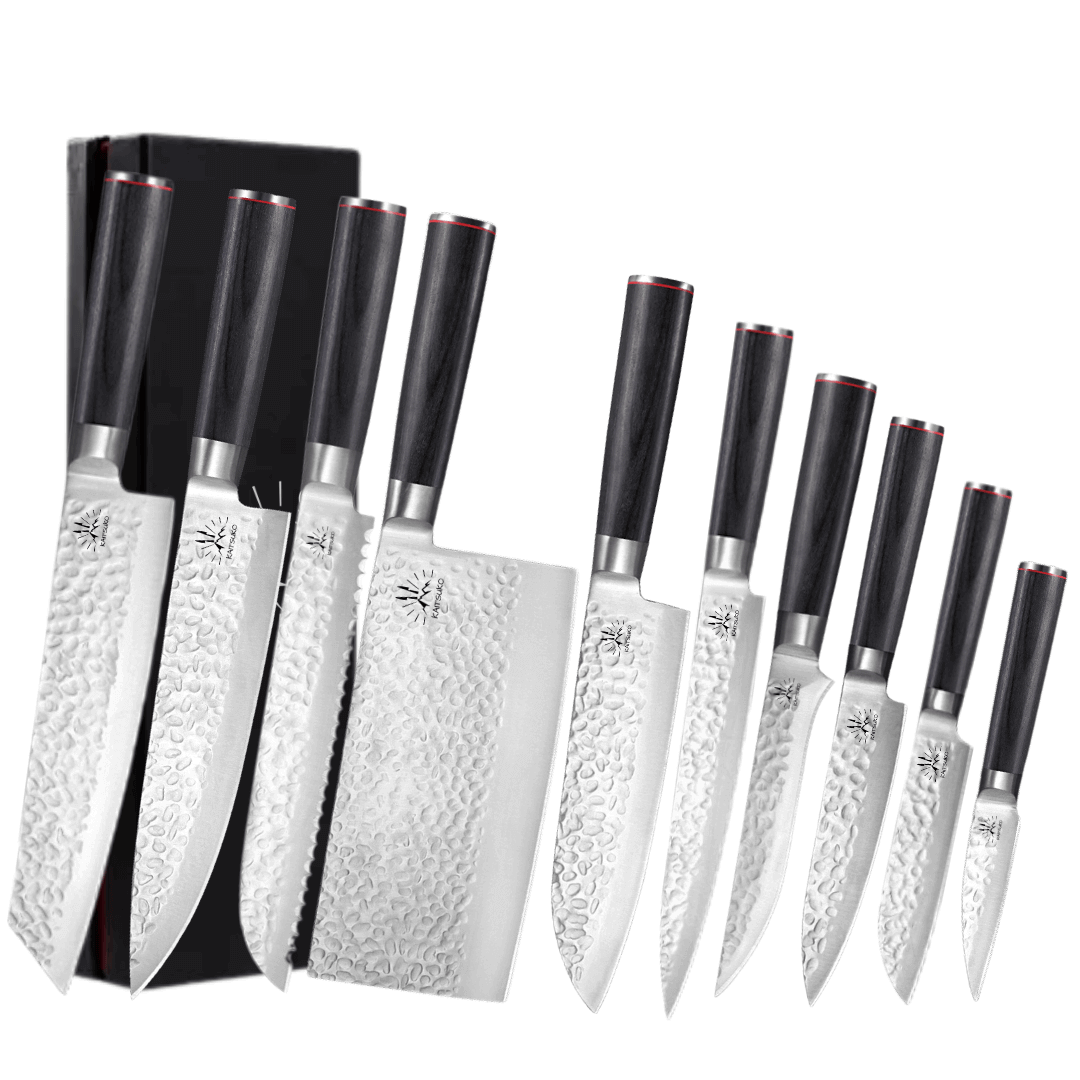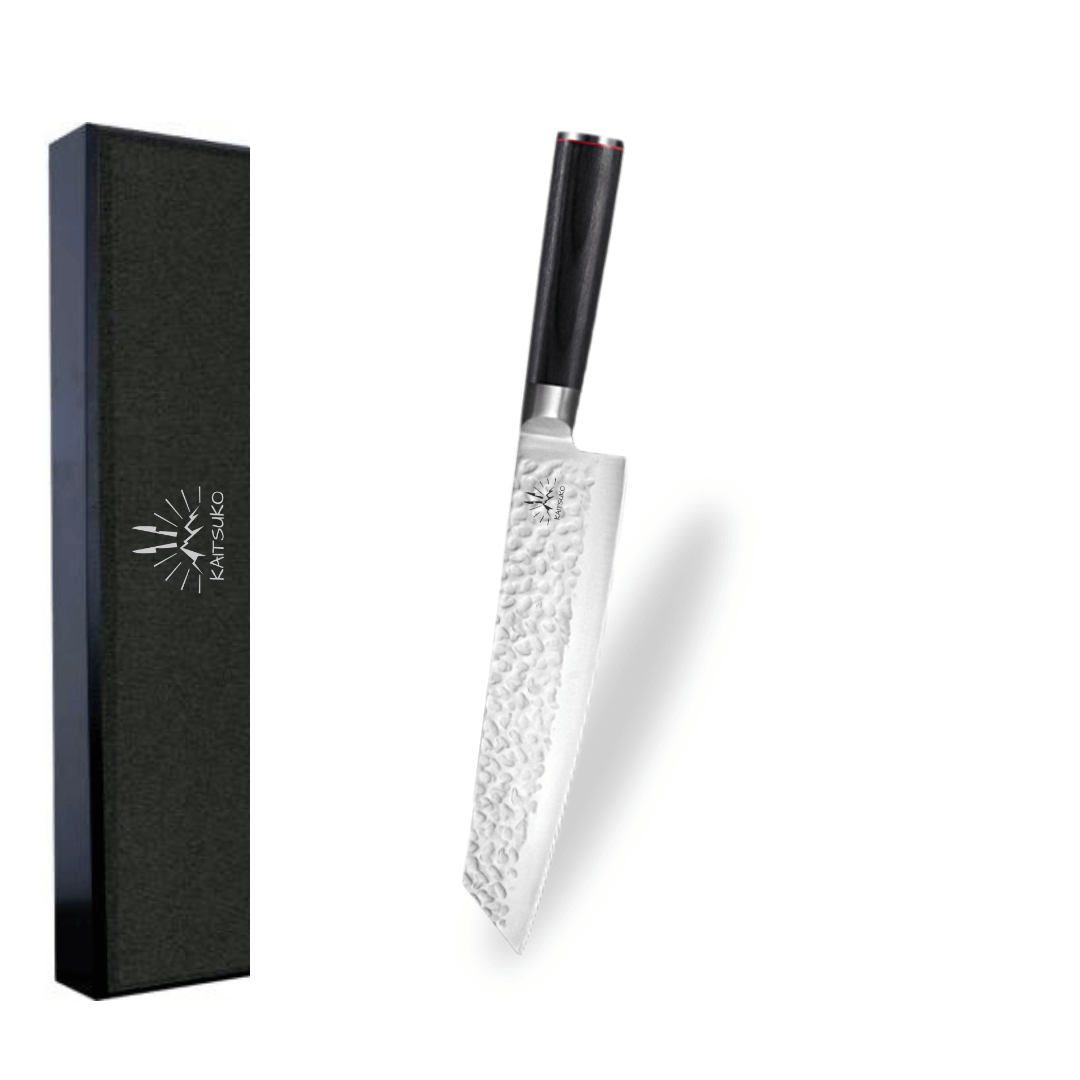Welcome to the world of Kaitsuko and its Santoku knives , combining Japanese tradition and contemporary innovation. Renowned for their versatility and ability to transform culinary preparation into a precise art, Santoku knives are not only indispensable kitchen tools but also symbols of quality and perfection.
Santoku knives are distinguished by their thin and sharp blade , ideal for clean and uniform cutting of meat, fish and vegetables. Originating from Japan, they are forged using ancestral techniques that ensure exceptional cutting quality and unparalleled durability . Each knife is thus the fruit of artisanal know-how passed down from generation to generation, guaranteeing absolute precision with each use!
What is a Santoku knife?
A Santoku knife is a Japanese kitchen tool known for its versatility and efficiency in food preparation.
Literally translated, "Santoku" means " three virtues " or " three uses", referring to its abilities to:
-
cut,
-
slicing,
-
and hashing.
This knife is distinguished by its wide blade, often between 15 and 18 centimeters , with a rectangular shape with a slightly rounded tip. While Western chef's knives, the Santoku has a straight blade, sometimes hollowed out with small alveoli. Result: this reduces friction and allows food to come off easily !
This quality allows the Santoku knife to precisely cut vegetables, fruits, meats and fish, providing a smooth and efficient cutting experience.
The Santoku is also appreciated for its balance and comfortable grip . Its wide blade and light weight allow for precise control during cutting movements, making it a preferred choice for both professional chefs and amateurs passionate about Japanese or fusion cuisine.
The advantages of the Santoku knife
Versatility and efficiency
The advantages of the Santoku knife lie primarily in its exceptional versatility and superior efficiency . Designed to excel in three main functions – cutting, slicing and chopping – the Santoku is the ideal tool for a diverse range of culinary tasks.
Its wide, straight blade allows for clean, precise cutting, whether for finely slicing vegetables, evenly slicing tender meats or precisely cutting delicate fish.
Design and ergonomics
The Santoku knife also stands out for its elegant design and carefully studied ergonomics . Featuring a wide, straight blade with small dimples, it not only offers a sleek aesthetic but also optimal functionality. Result: this design allows for precise and efficient cutting, reducing resistance when cutting food and ensuring smooth handling!
Differences Between a Santoku and a Chef's Knife
|
Santoku knife |
Chef's knife |
|
|
Blade shape |
Wide, straight blade, sometimes with alveoli |
More curved and generally longer blade |
|
Main use |
Versatile: cuts, slices, chops |
Mainly for cutting and chopping |
|
Cutting technique |
Pendulum movements |
Pendulum and seesaw movements |
|
Tip of the blade |
Rounded tip |
Sharper tip for precise cuts |
|
Materials |
Japanese steel |
Various materials, often stainless steel |
|
Handling |
Light and balanced |
Heavier, sometimes less balanced |
|
Aesthetic |
Elegant design, often with engraved patterns |
Several design styles, often more sober |
How to use a Santoku knife?
Cutting techniques
To successfully use a Santoku knife effectively, it is essential to master a few cutting techniques:
-
Rocking Motion : Use a smooth rocking motion as you guide the blade through food for even slices;
-
Chopping : Use a chopping technique to finely chop herbs and vegetables;
-
Using the tip : Use the rounded tip for precise cuts such as boning or fine slicing.
These techniques maximize the efficiency of the Santoku knife, allowing you to achieve cutting results that are both precise and professional.
Directions for use
Here is a list of simple tips for using a Santoku knife with maximum efficiency:
-
Maintain a firm but relaxed grip : The knife should be held snugly, without squeezing too tightly;
-
Adopt a proper cutting angle : Keep an angle of about 15 degrees to the board for efficient cutting;
-
Use the full length of the blade : Operate the blade all the way to the tip for continuous, smooth cuts;
-
Maintain the edge regularly : Sharpen the knife regularly to maintain an optimal edge;
-
Clean it immediately after use : Rinse with lukewarm water and dry it thoroughly to prolong its life .
How do I take good care of my Santoku?
Cleaning and maintenance
To take care of your Santoku knife, it is essential to clean it immediately after each use .
To do this, you should rinse it in warm water with a little mild soap , then dry it carefully with a soft cloth. Avoid leaving it to soak in water or putting it in the dishwasher, as this could damage the wooden handle and alter the sharpness of the blade.
Sharpening and storage
To maintain the performance of your Santoku knife, regular sharpening is another key step.
At this point, it is highly recommended to use a whetstone or a sharpening steel to restore the edge of the blade. Avoid aggressive sharpening methods that could damage the blade.
Then store it in a knife block or on a magnetic bar to protect it from damage and extend its life!
DISCOVER OUR ACCESSORIES TO TAKE CARE OF YOUR KNIVES
The different ranges of Santoku knives at Kaitsuko
At Kaitsuko, we are committed to offering you a diverse range of Santoku knives , each carefully selected for its high standards of quality and performance.
Our collection includes models ranging from traditional versions to contemporary designs, all crafted from premium Japanese steel . Each knife is forged using time-honored craftsmanship techniques that ensure an exceptionally sharp and durable blade, ideal for precise and fluid cutting. So whether you are a professional chef looking for a Santoku knife to help you master Japanese cooking techniques, or a passionate amateur looking to incorporate a touch of elegance and functionality into your kitchen, our diverse collection will meet your every need.
At Kaitsuko, our goal is above all to help you find the best kitchen knife through our range of high-quality Japanese knives!
Frequently Asked Questions About Santoku Knives
What is the best way to sharpen a Santoku knife?
The best method to sharpen a Santoku knife is to use a whetstone or sharpening steel, respecting the angle of the blade to preserve its original sharpness.
What are the criteria for choosing a good Santoku knife?
To choose a good Santoku knife, choose a blade made of high-quality Japanese steel, a good ergonomic grip, and make sure it is balanced for optimal control when cutting.







